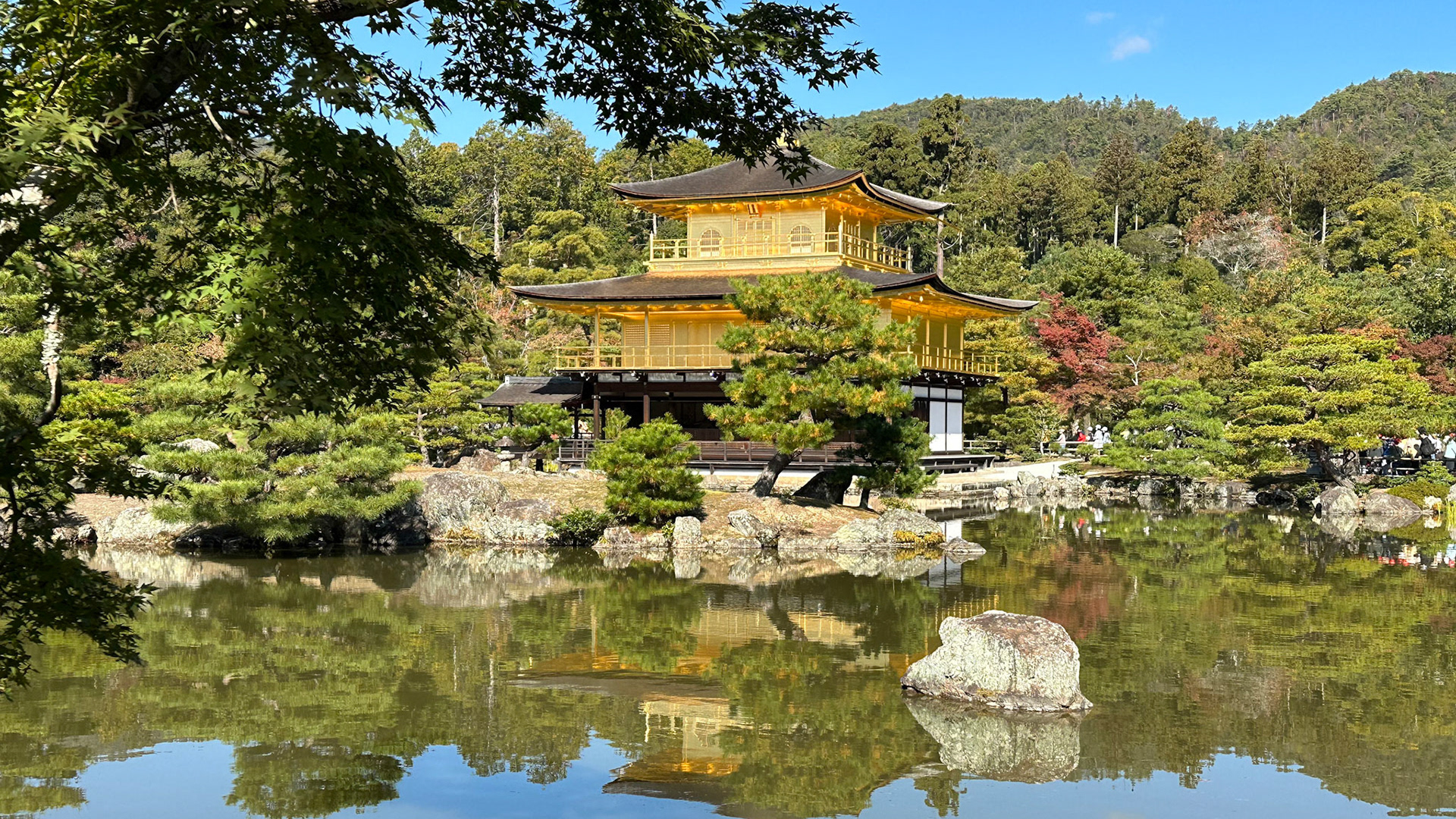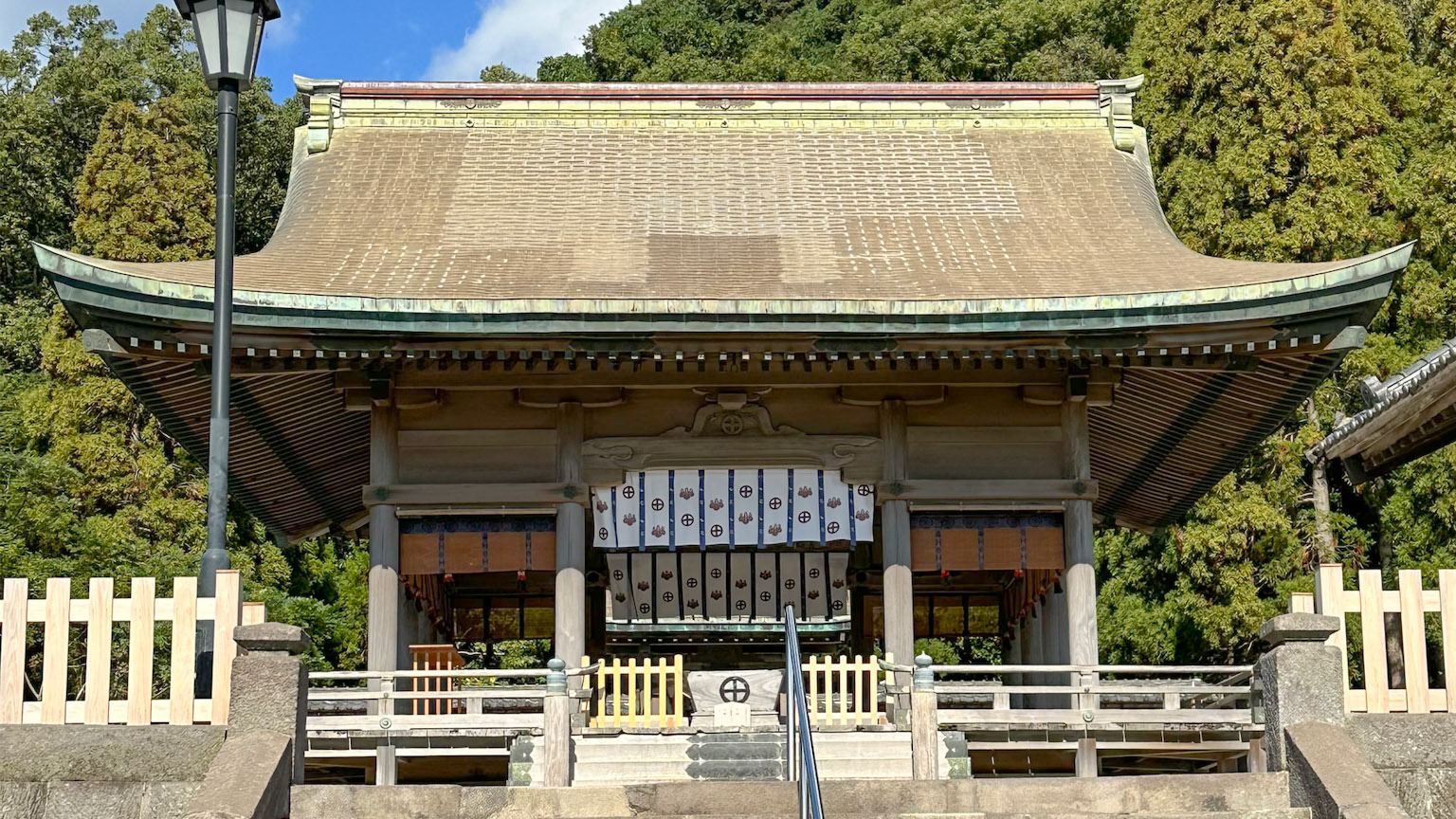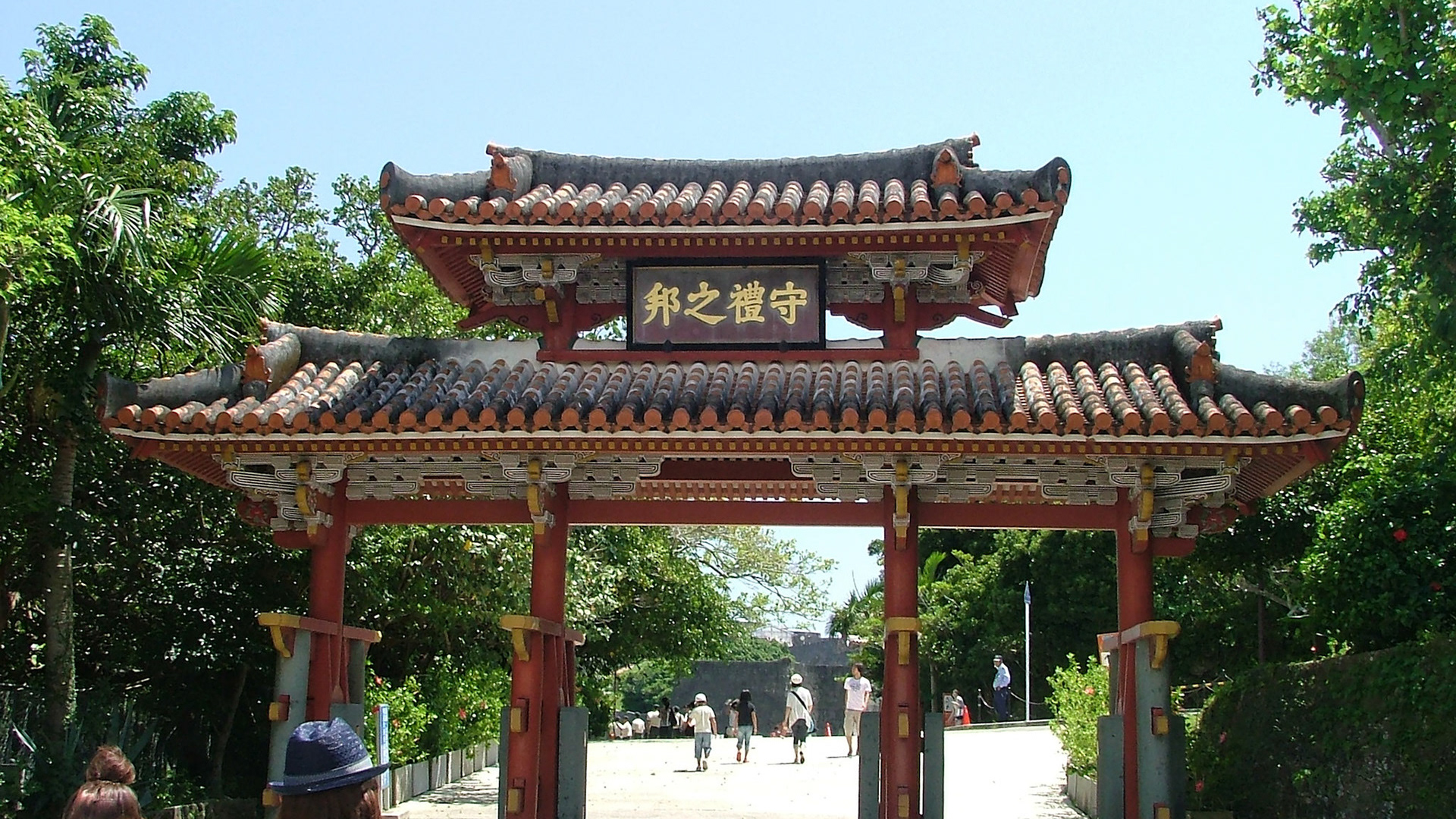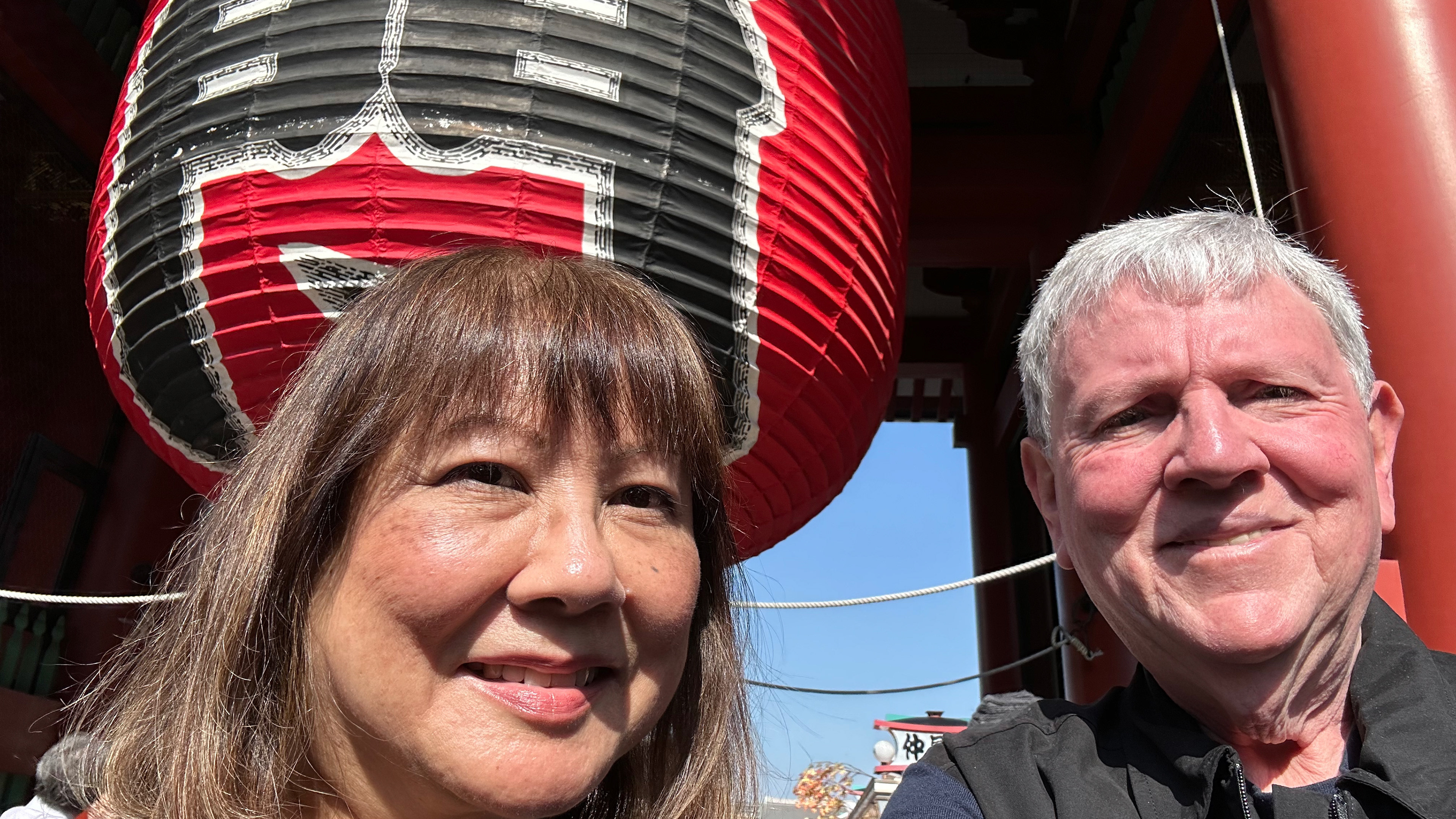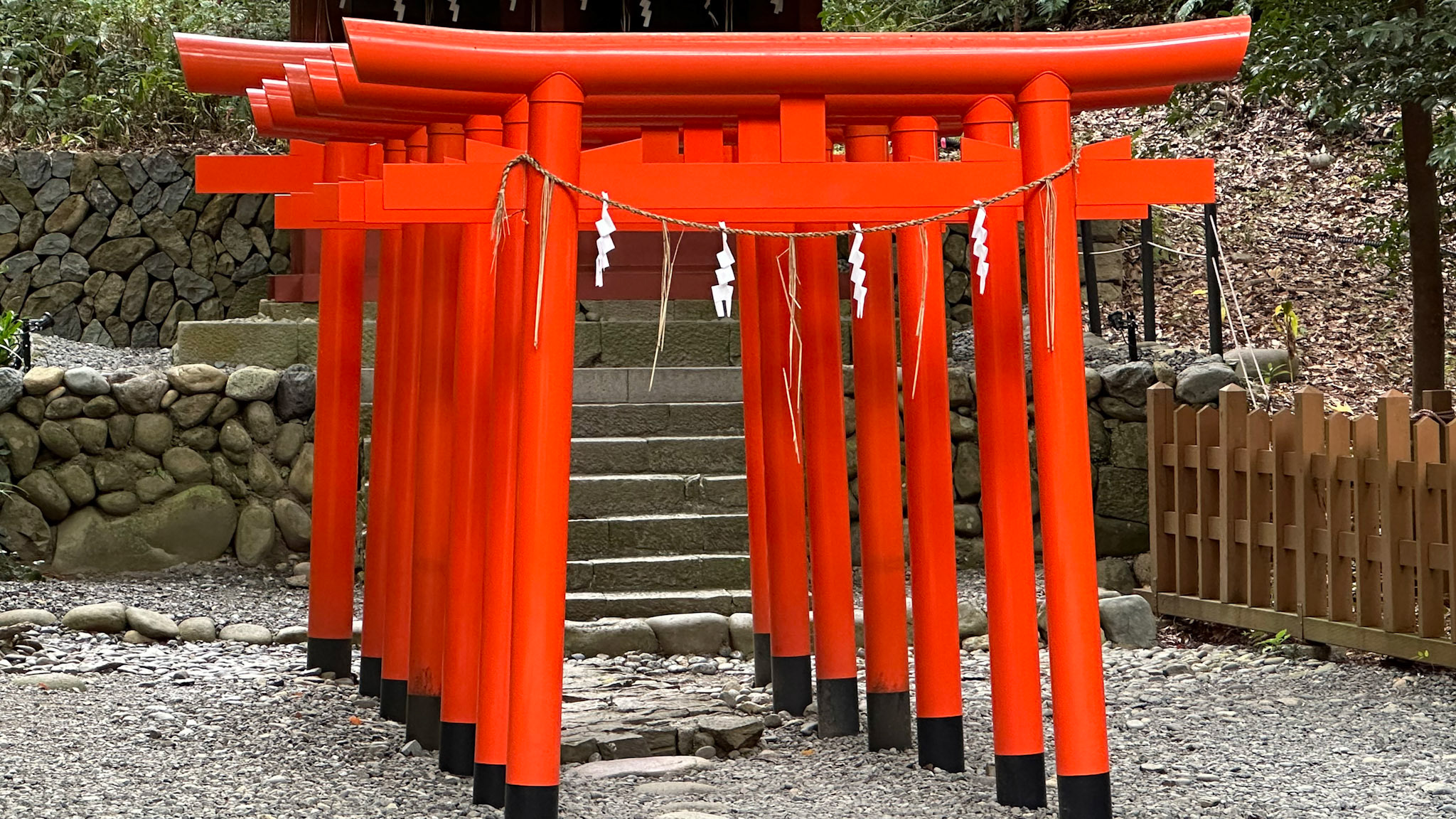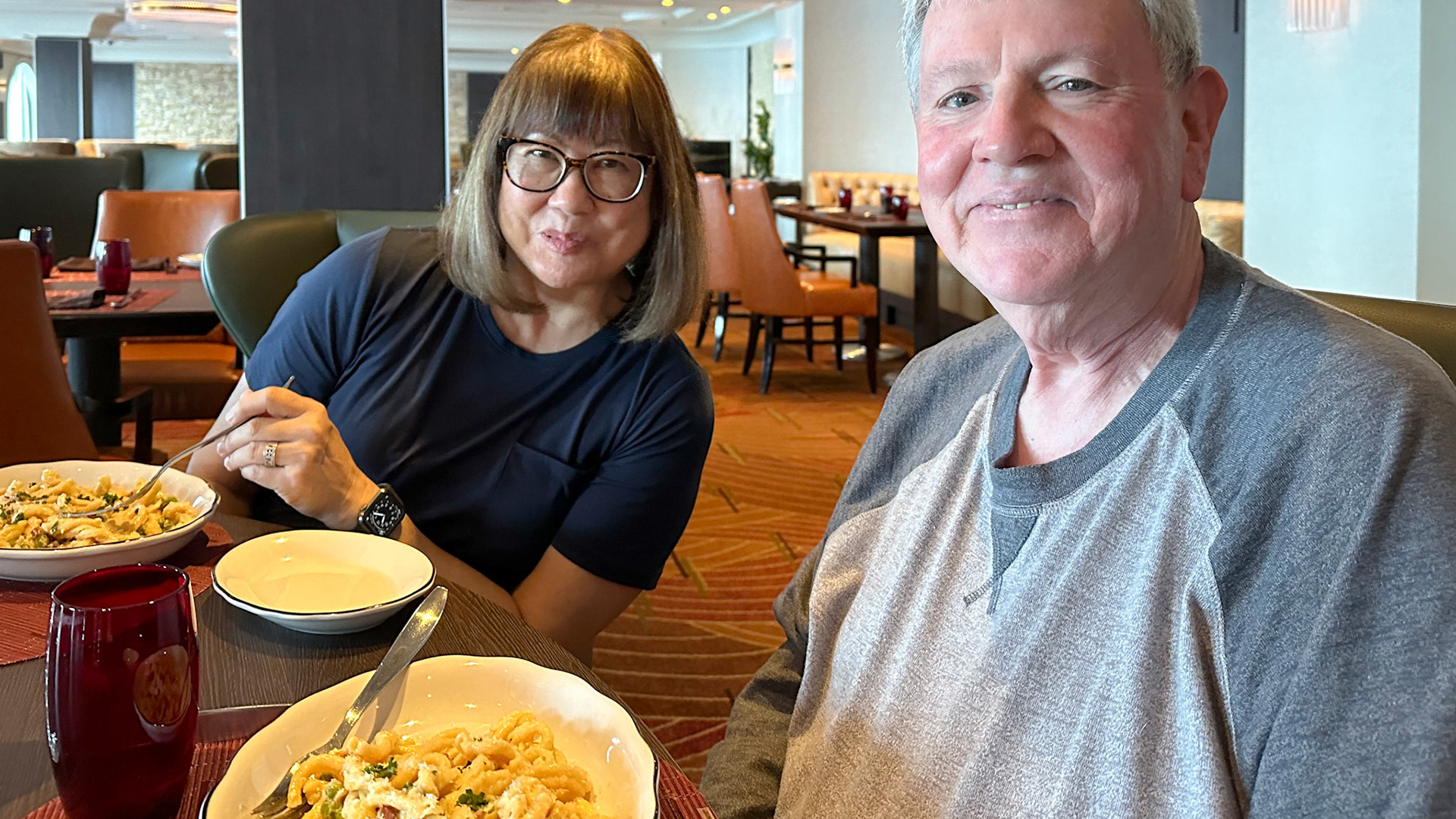Arriving in Osaka Port
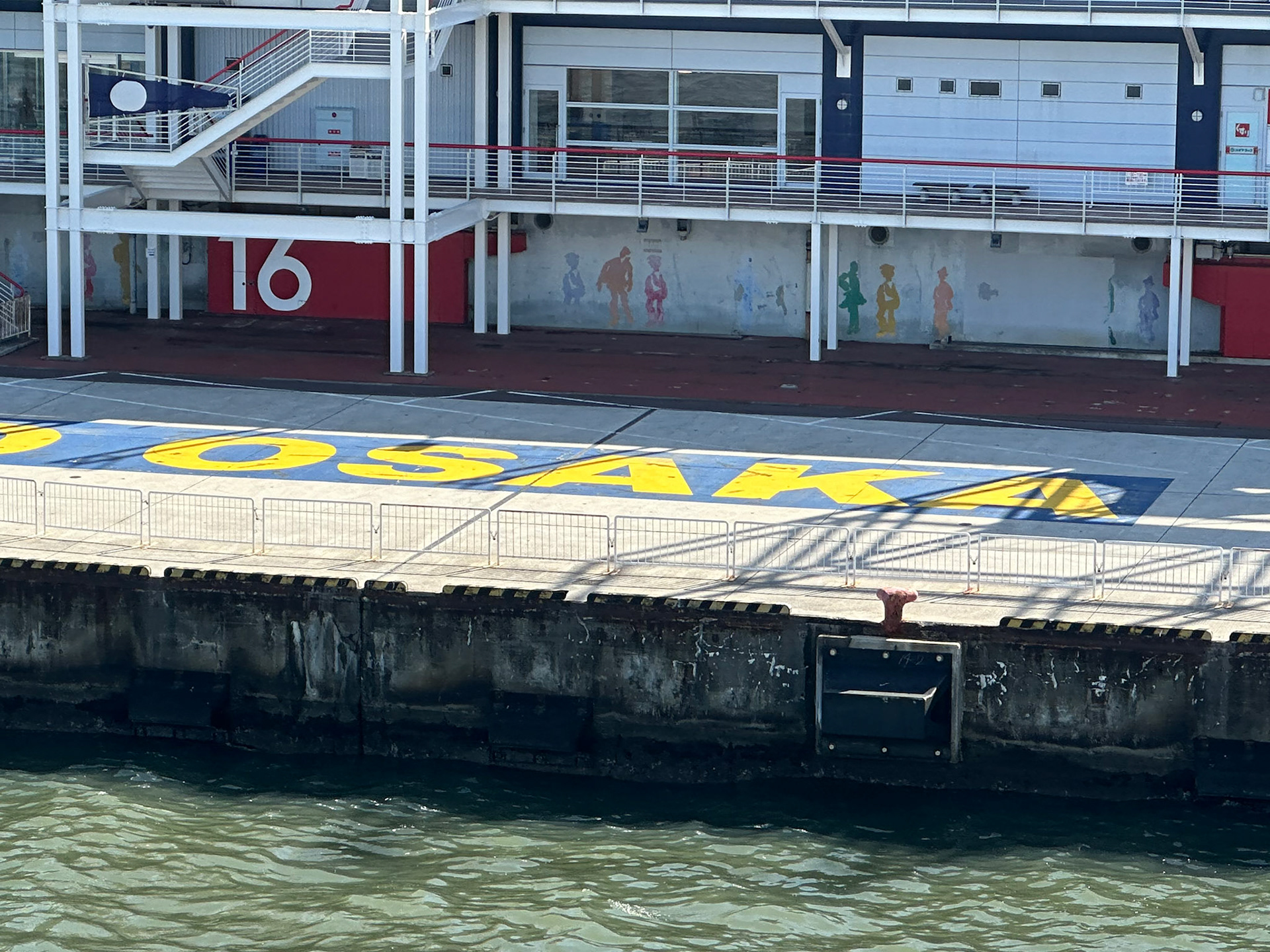
Photo from the helipad of our cruise ship as we dock in Osaka, Japan

We were invited to the helipad of our cruise ship as we dock in Osaka, Japan
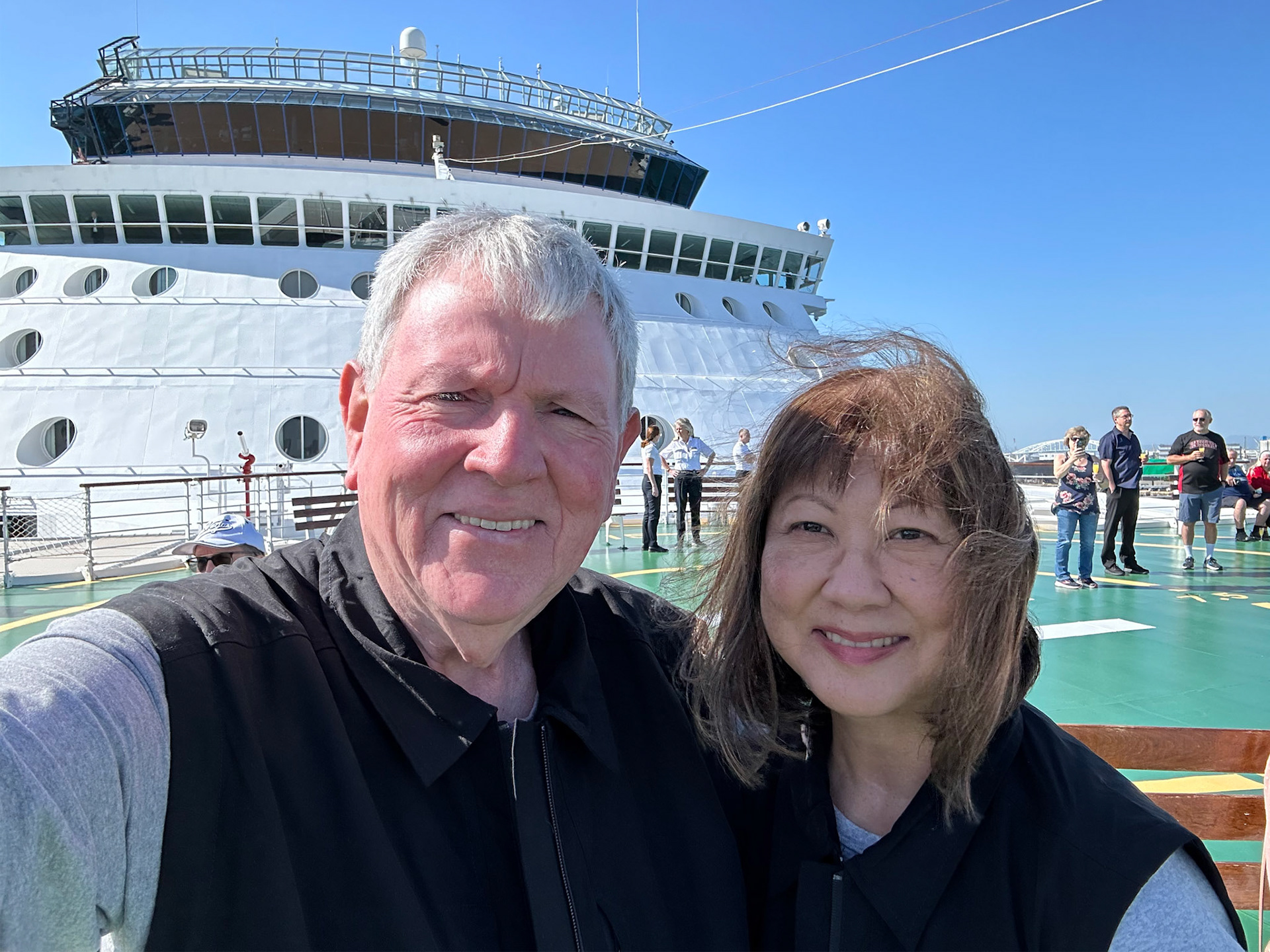
We were invited to the helipad of our cruise ship as we dock in Osaka, Japan
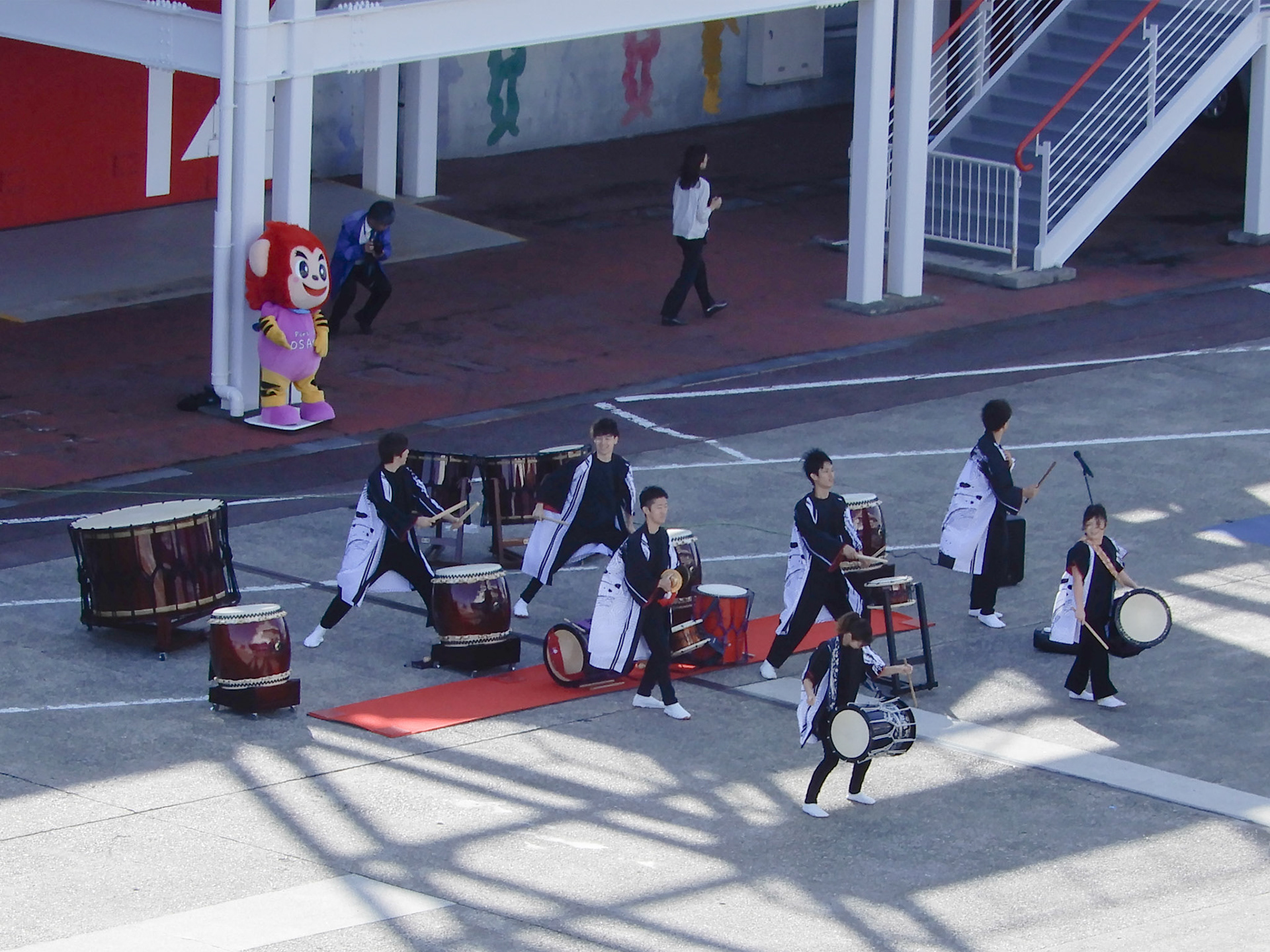
Japanese Taiko Drums or “Kumi-daiko” greeting us at Osaka harbor

Japanese Taiko Drums or “Kumi-daiko” greeting us at Osaka harbor
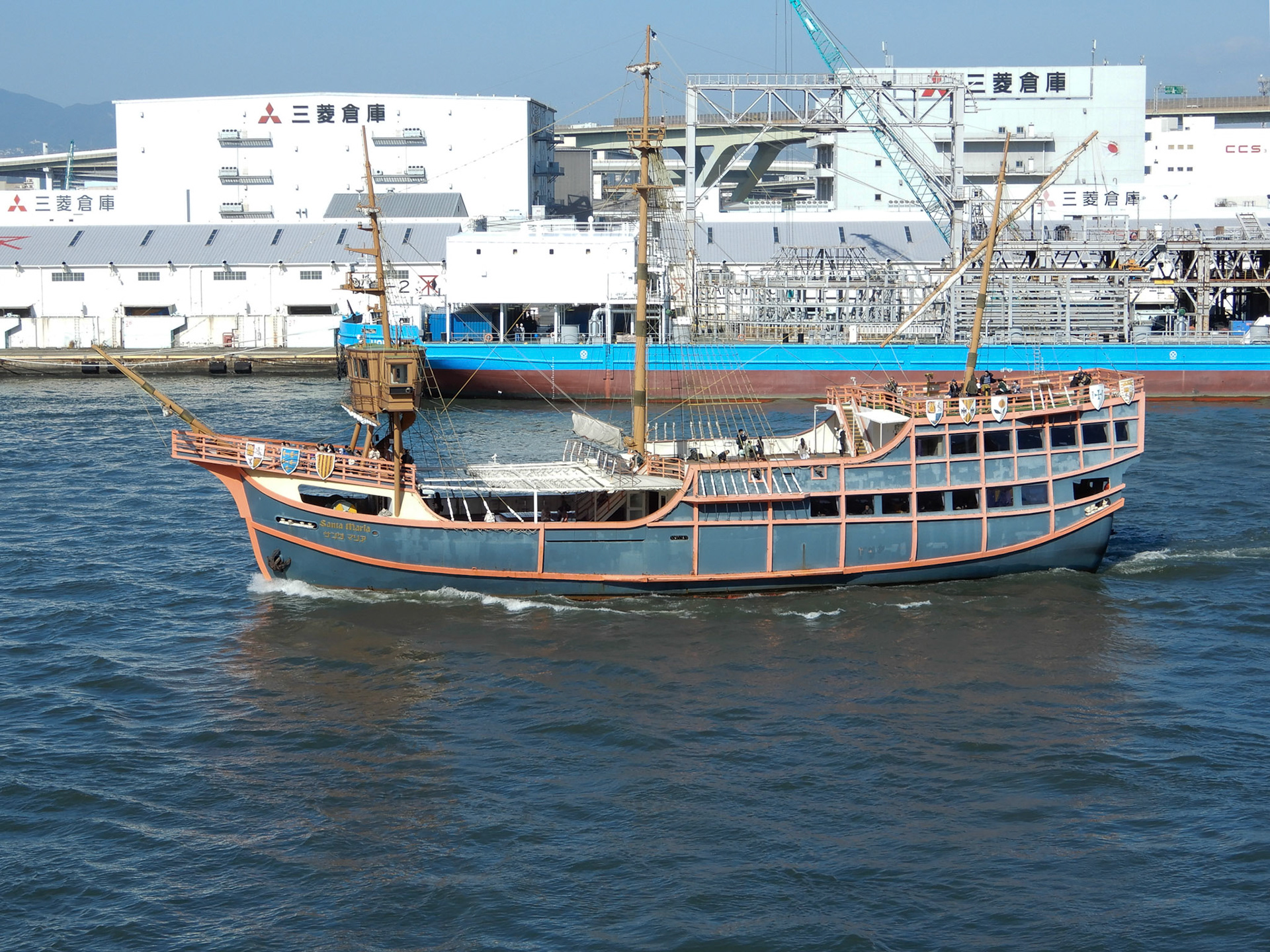
Not sure what this boat is used for?
Todaiji Temple (Great Buddha)
Todaiji ("Great Eastern Temple") is one of Japan's most famous and historically significant temples and a landmark of Nara. The temple was constructed in 752 as the head temple of all provincial Buddhist temples of Japan and grew so powerful that the capital was moved away from Nara in 784 to lower the temple's influence on government affairs.

Todaiji Temple (Tōdai-ji Kon-dō), the Great Buddha, at Nara

Todaiji Temple (Tōdai-ji Kon-dō), the Great Buddha, at Nara

Todaiji Temple (Tōdai-ji Kon-dō), the Great Buddha, at Nara

Susan feeding one of the famous Nara deer
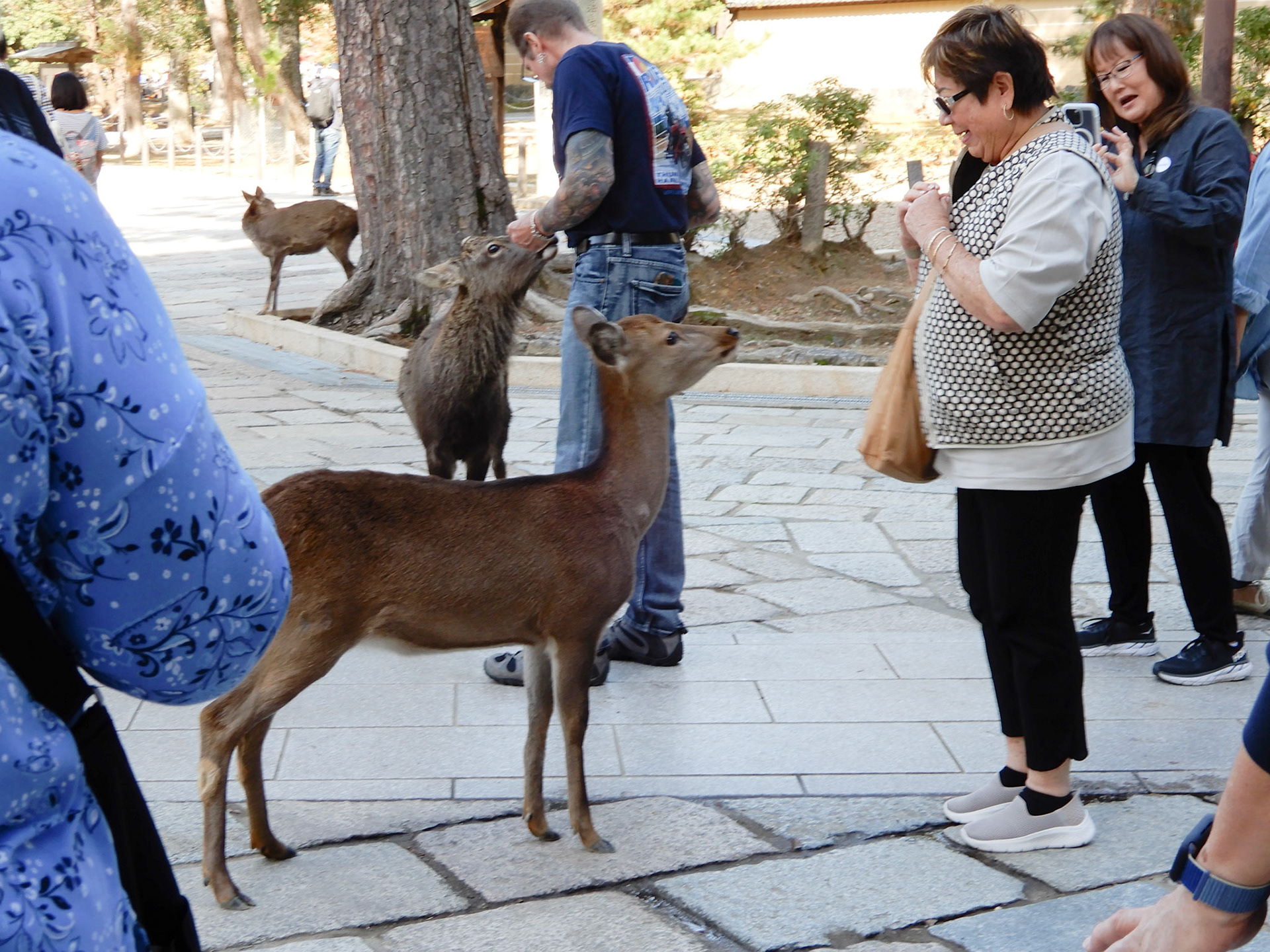
The “famous” deer at Tōdai-ji Kon-dō - always looking for a treat. Deer either taught people to bow or the other way around.

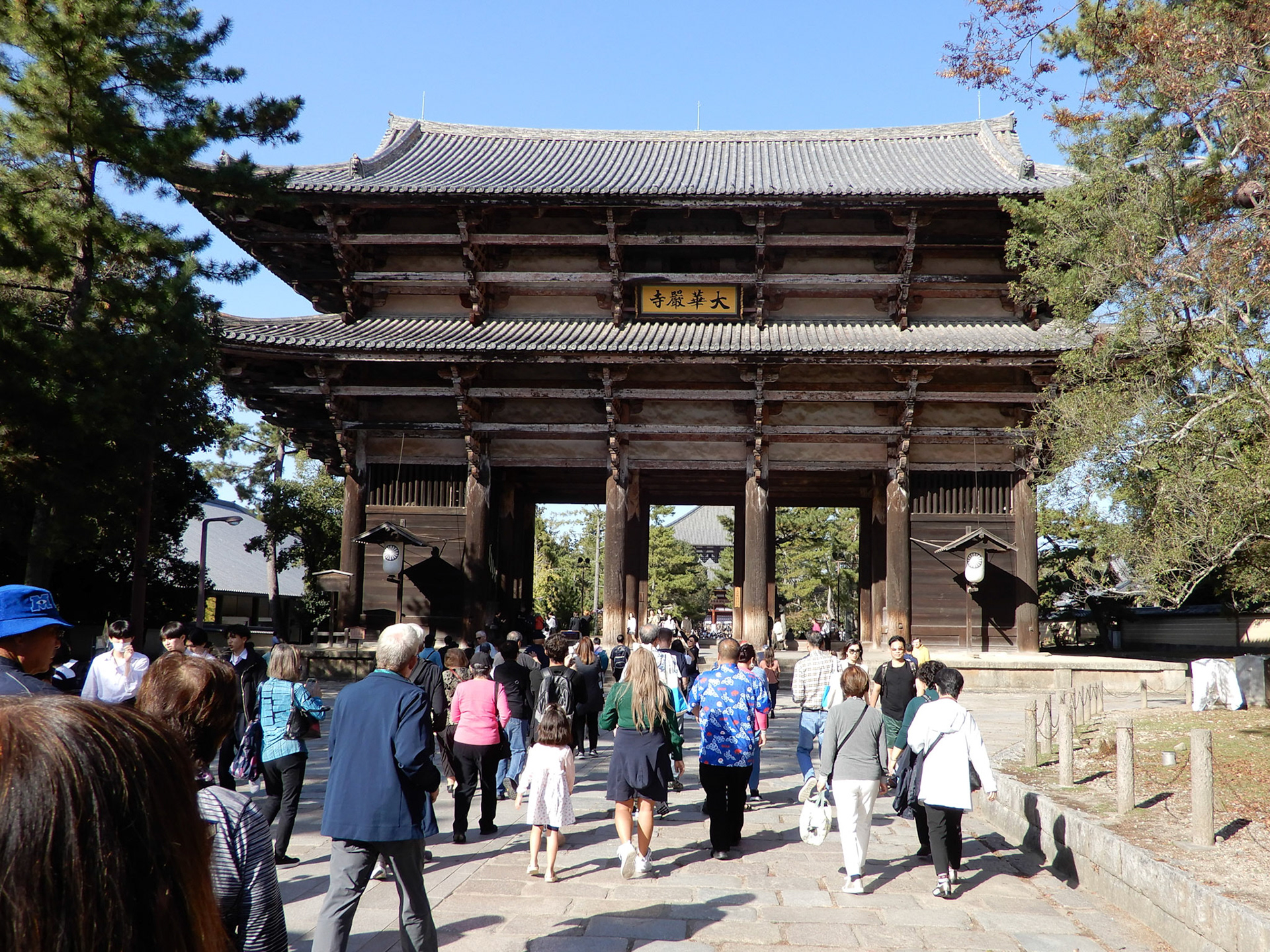
Todaiji Temple - the Great South Gate
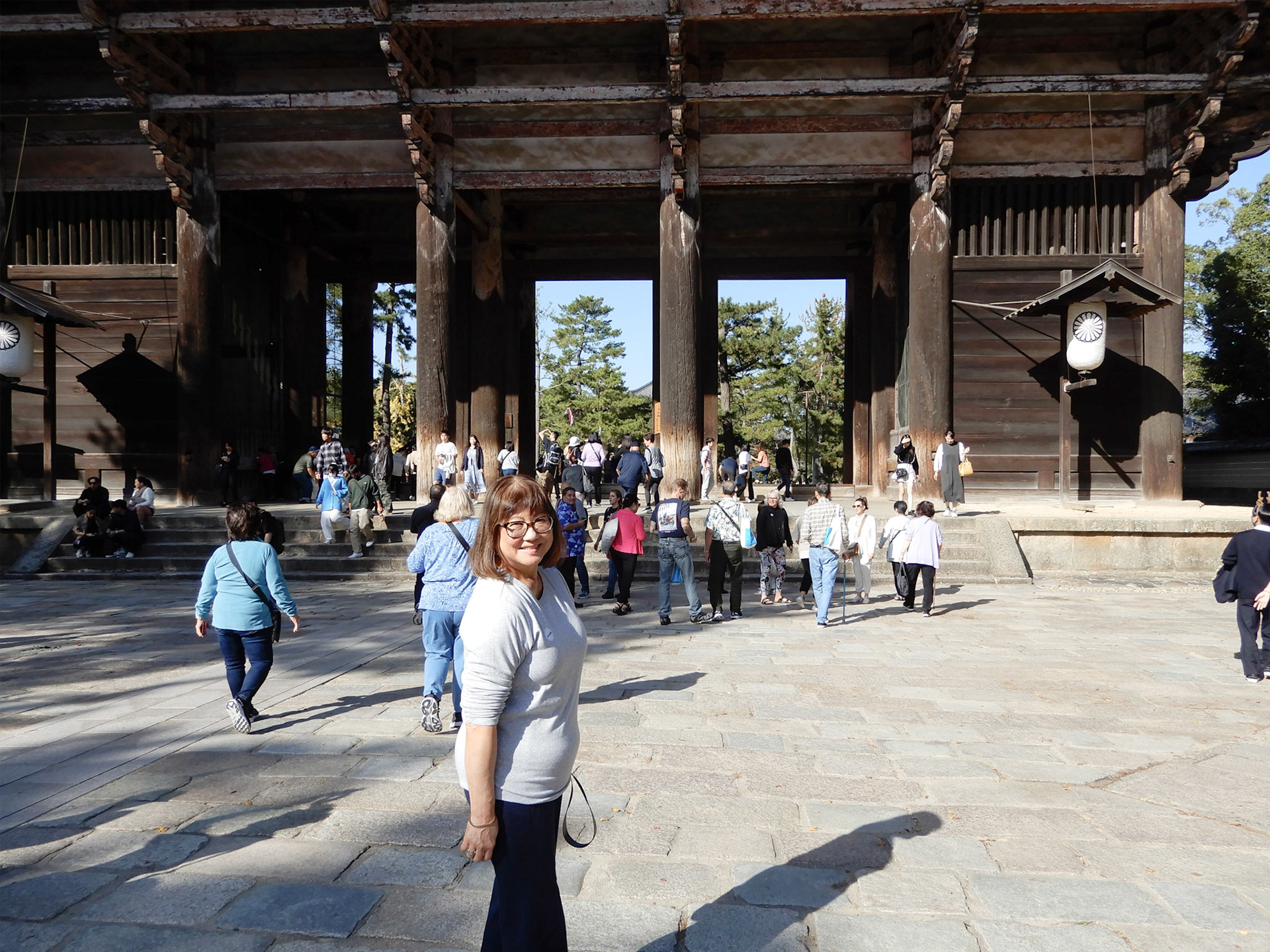
Todaiji Temple - the Great South Gate
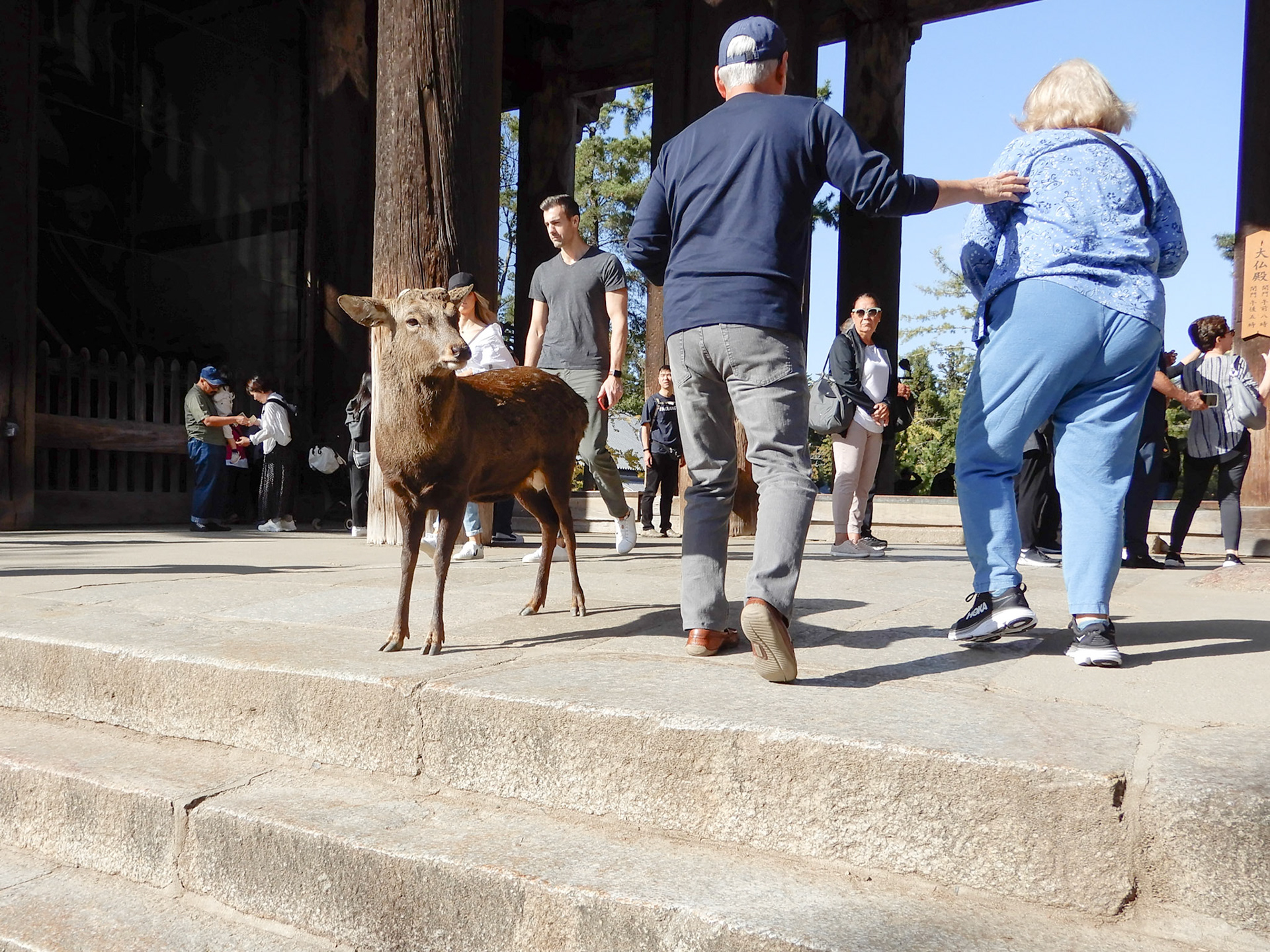
The “famous” deer at Tōdai-ji Kon-dō - they are everywher and always looking for a treat.

Great Buddha (Daibutsu) - his open hand alone is as tall as a human being
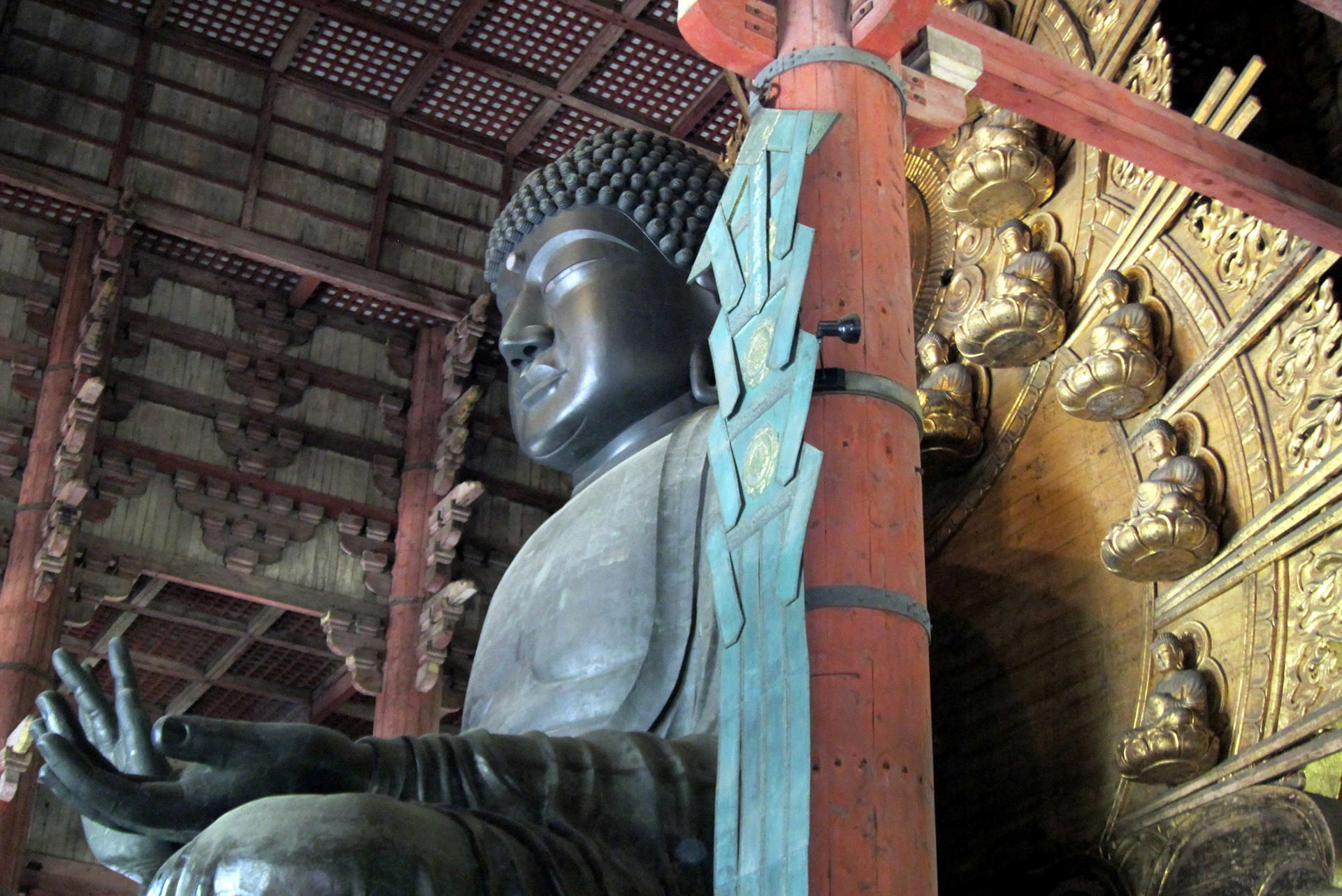
Great Buddha (Daibutsu) with detail of the statue’s background

Great Buddha (Daibutsu) - his open hand alone is as tall as a human being
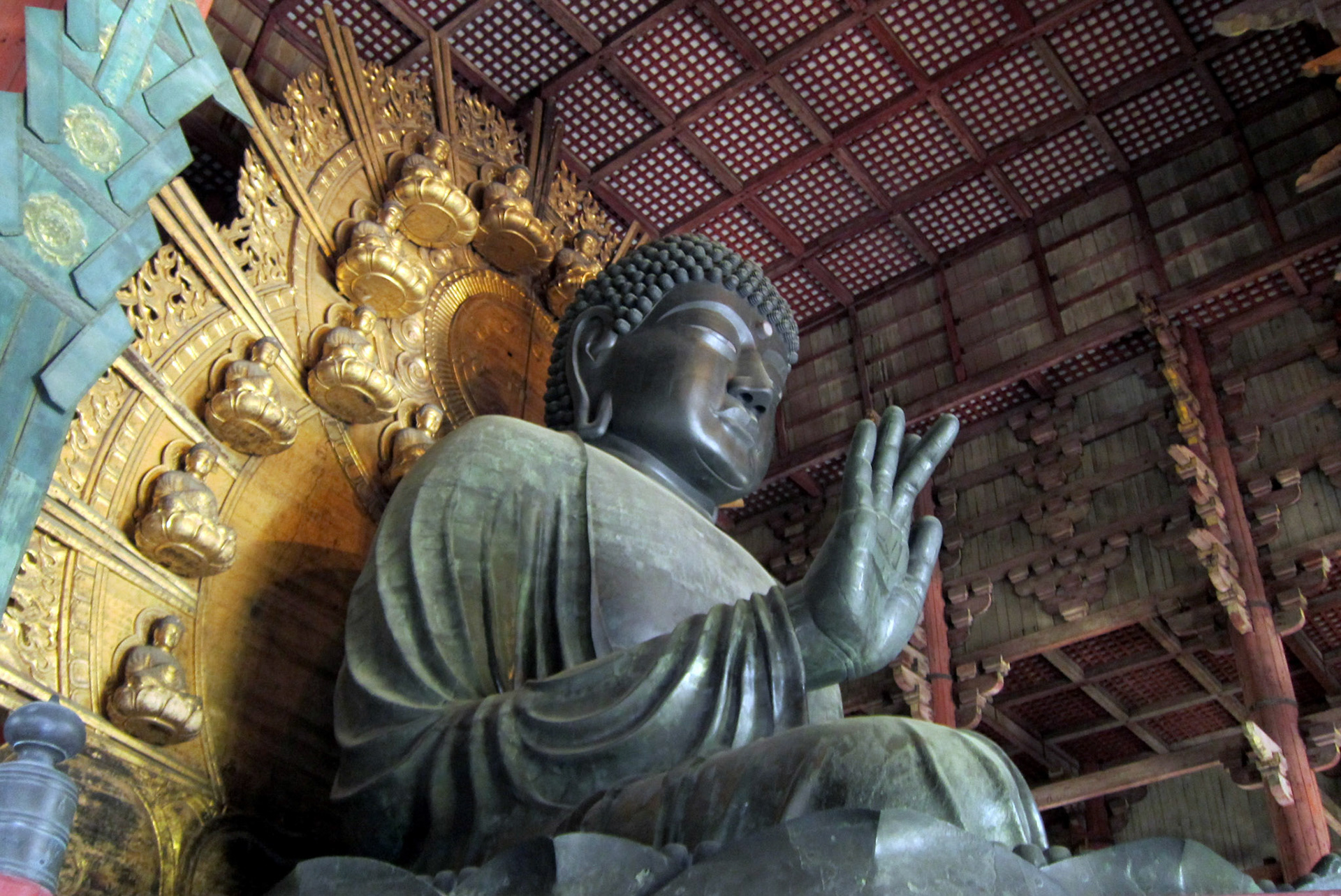
Great Buddha (Daibutsu) - his open hand alone is as tall as a human being
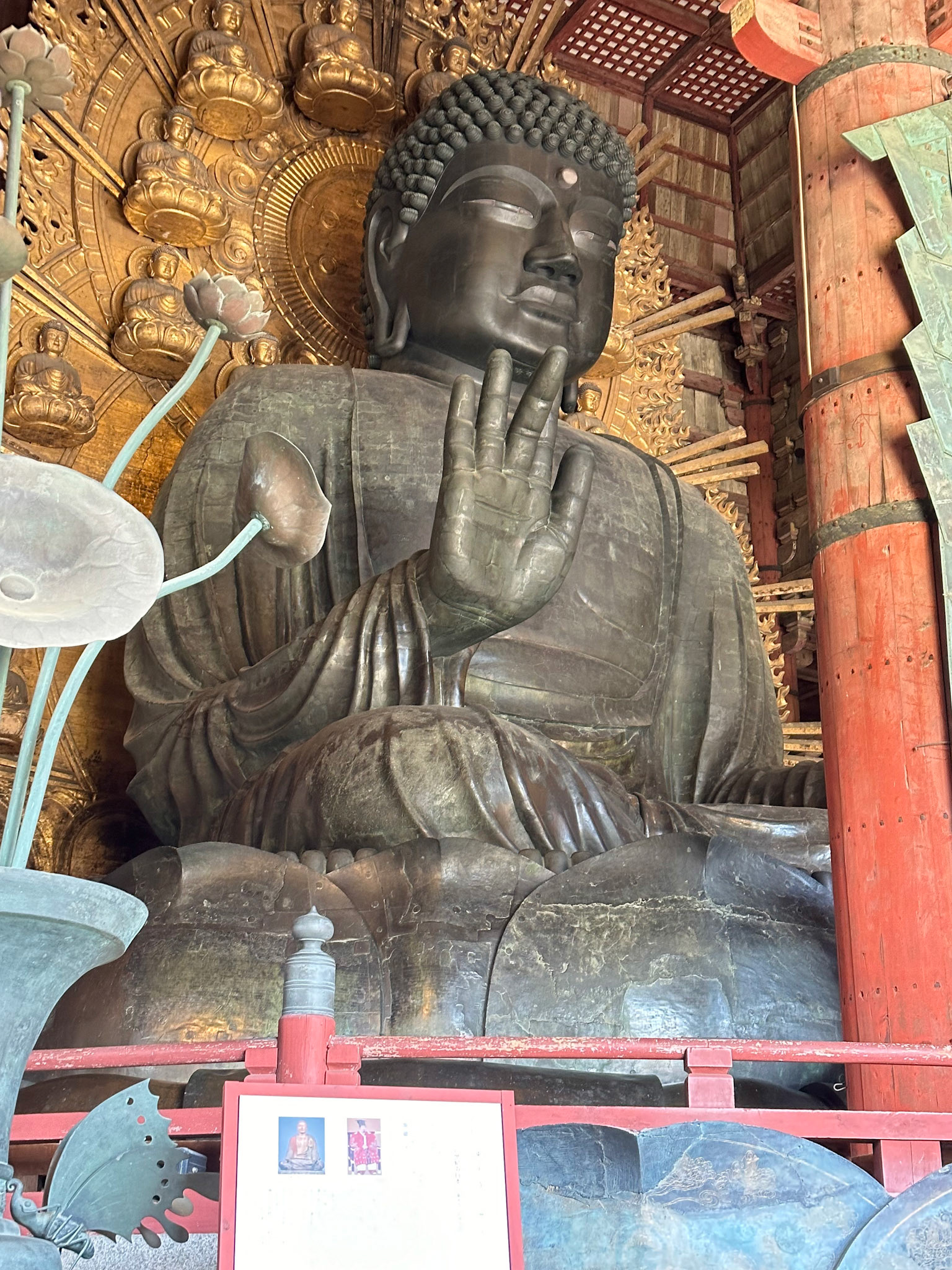
Great Buddha (Daibutsu) - his open hand alone is as tall as a human being

A Bodhisattva, a servant of the main Buddha. There is one of these statues on either side of the Daibutsu.
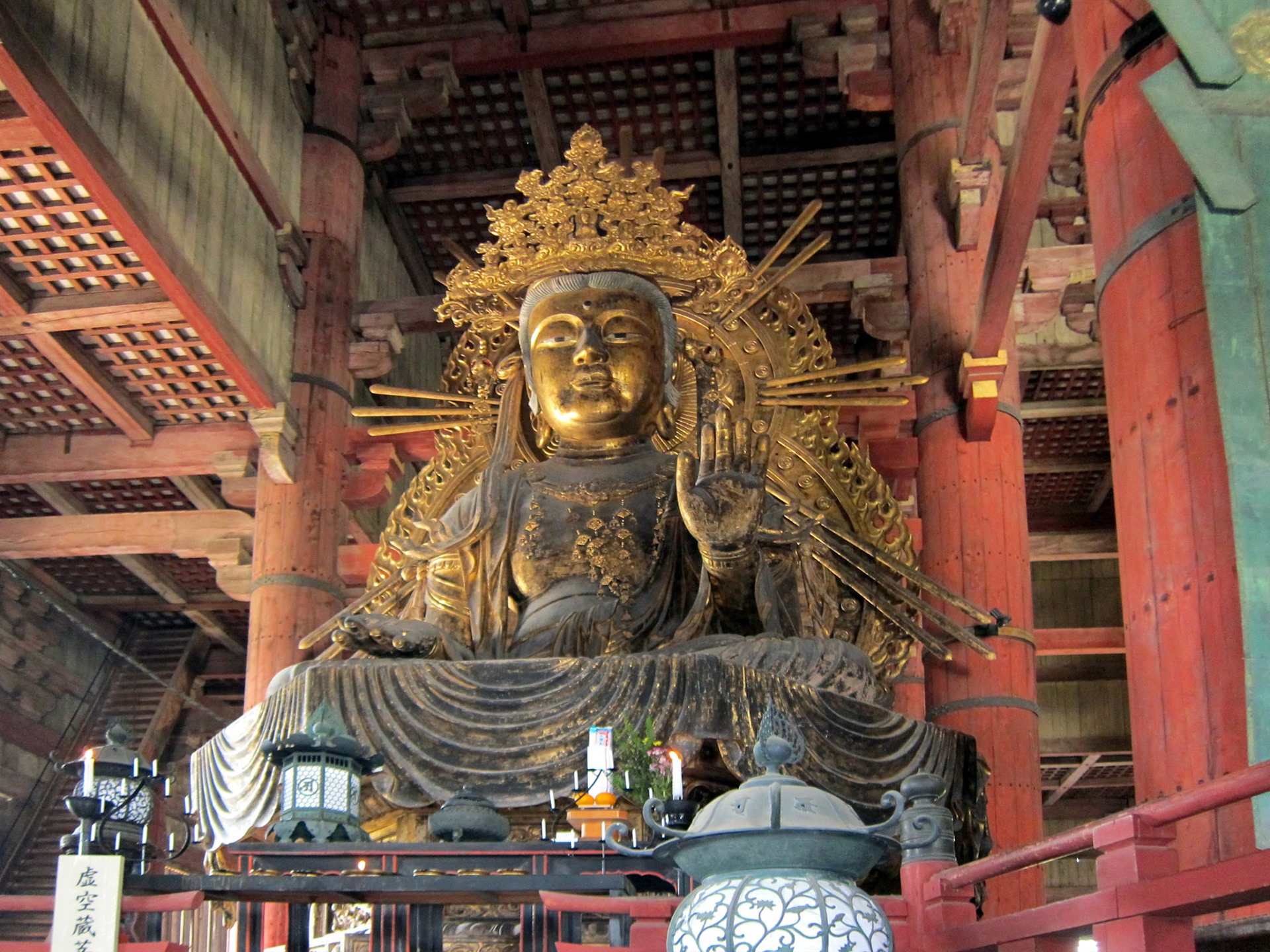
A Bodhisattva, a servant of the main Buddha. There is one of these statues on either side of the Daibutsu.

A Bodhisattva, a servant of the main Buddha. There is one of these statues on either side of the Daibutsu.

A Bodhisattva, a servant of the main Buddha. There is one of these statues on either side of the Daibutsu.
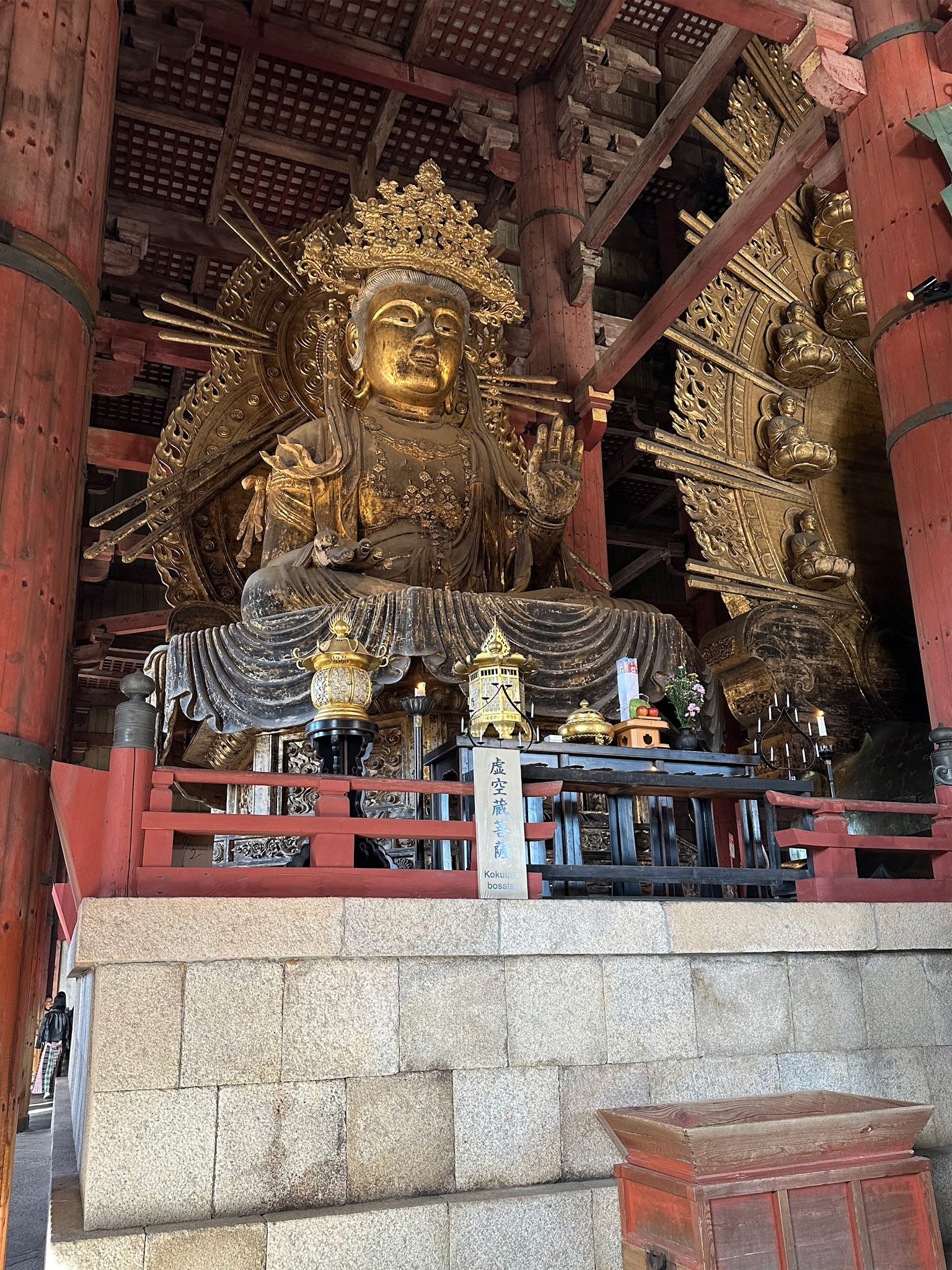
A Bodhisattva, a servant of the main Buddha. There is one of these statues on either side of the Daibutsu.

Komoku-ten, the Guardian King of the South, holding a writing brush and scroll symbolizing the copying of sutras.

Komoku-ten, the Guardian King of the South, holding a writing brush and scroll symbolizing the copying of sutras.
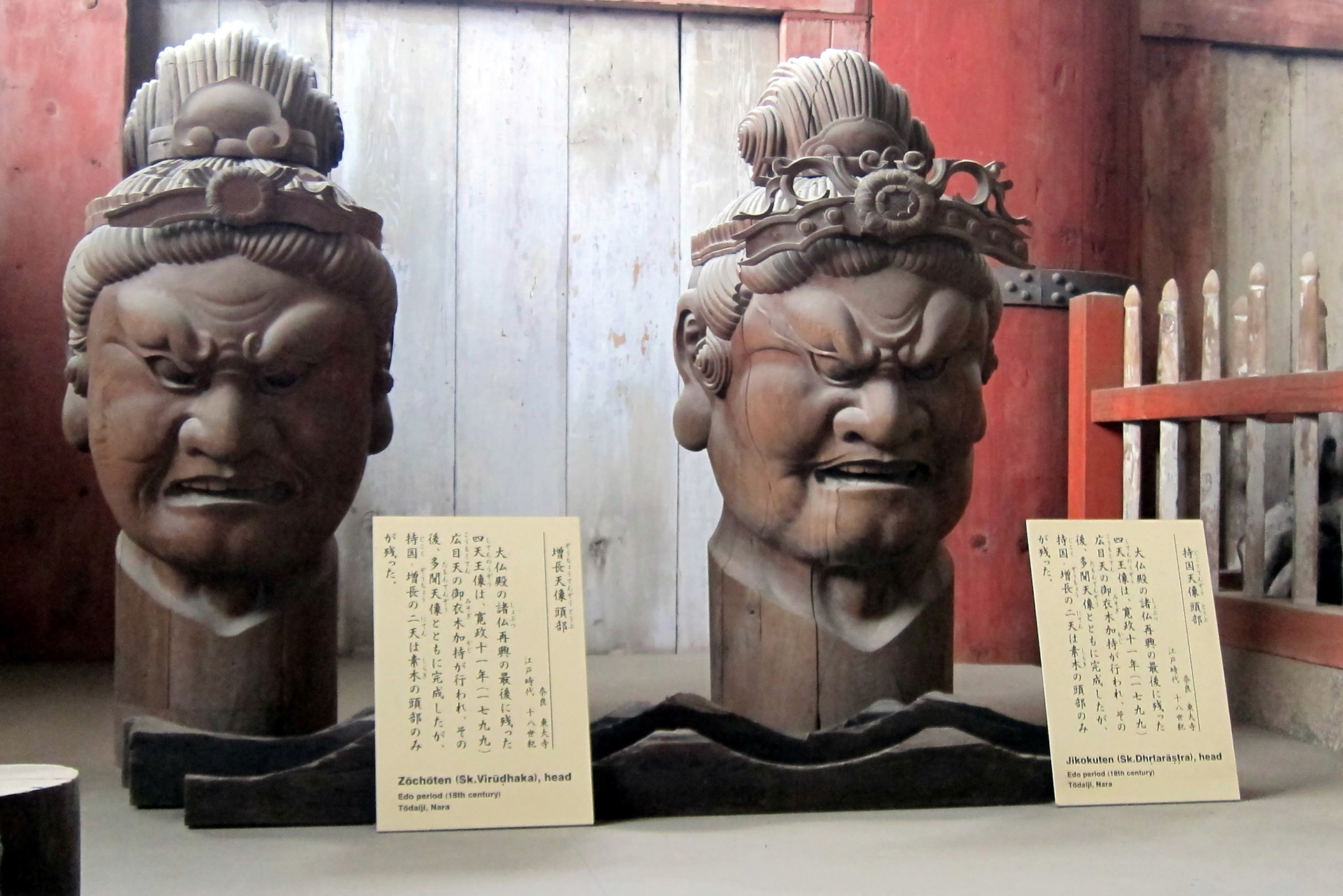
On the left is the head of Zōchōten (Sk. Virudhakai), dating from the Edo period in the 18th century. Ont he right is the head of Jikokuten (Sk. Dhrtarastrai), dating from the Edo period in the 18th century.

Large model of the temple and grounds

Large model of the temple and grounds
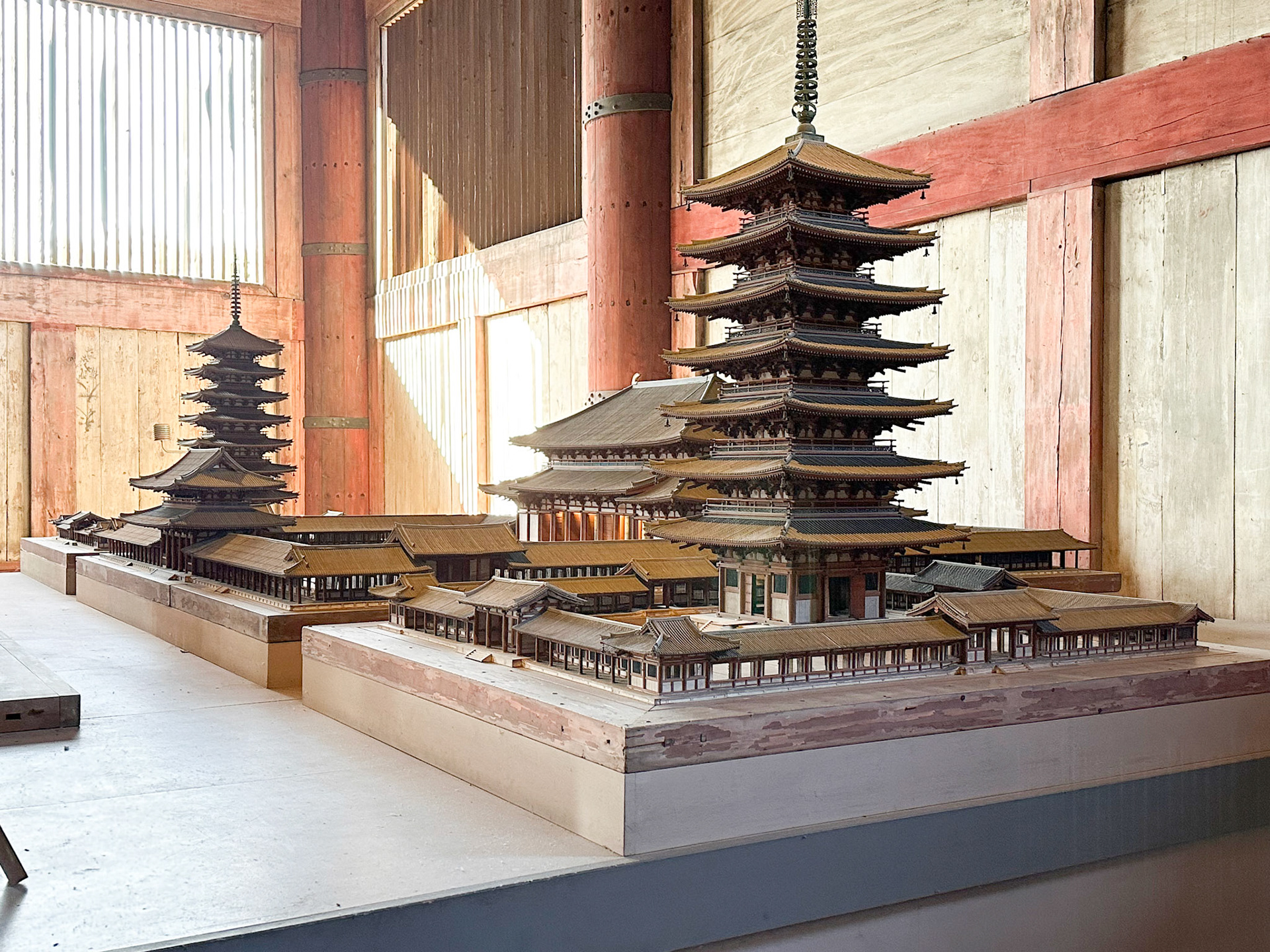
Large model of the temple and grounds

Misshaku, or Misshaku-rikishi, one of the Ni-ō (“Two Kings”) who guard the Tōdai Temple
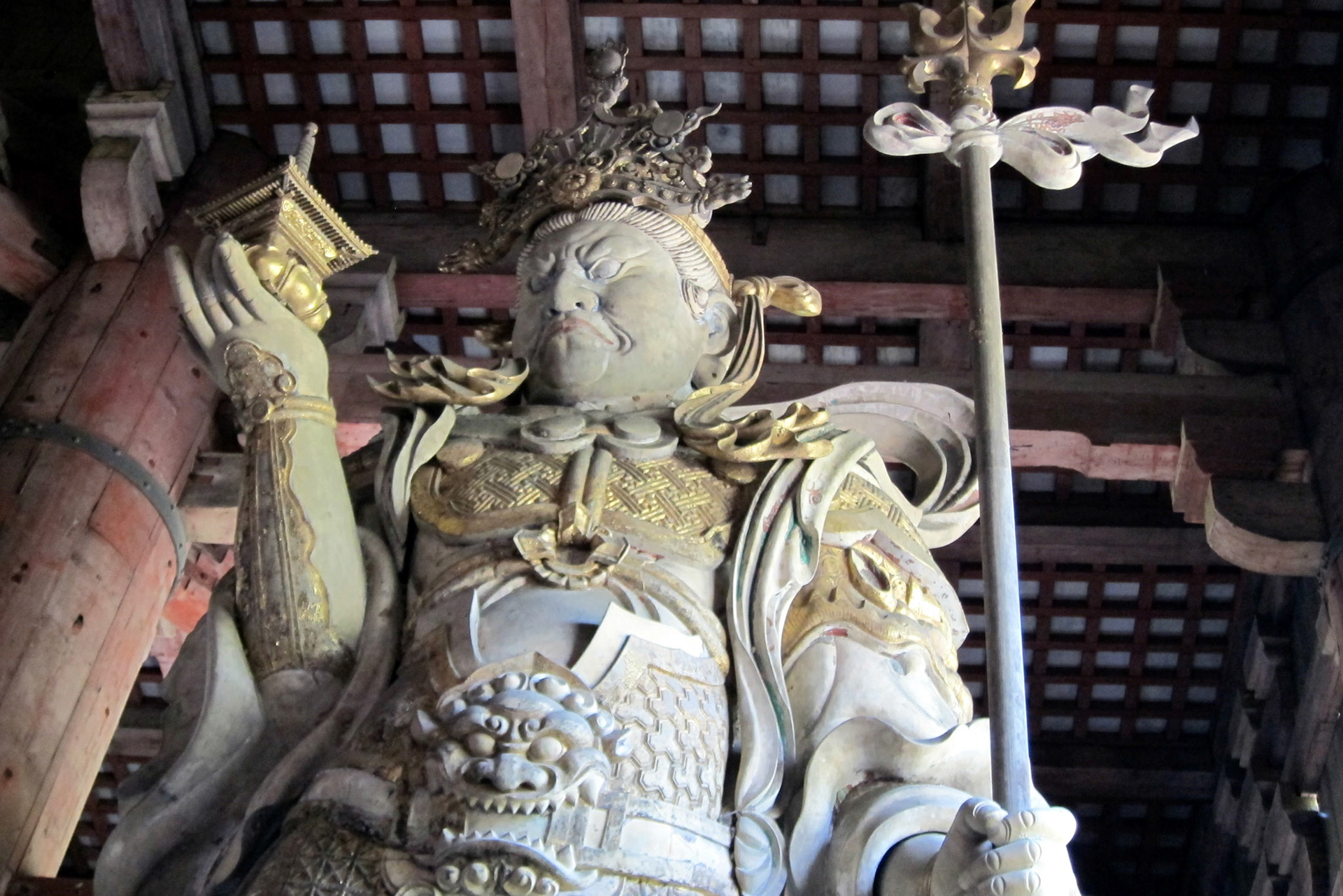
Misshaku, or Misshaku-rikishi, one of the Ni-ō (“Two Kings”) who guard the Tōdai Temple
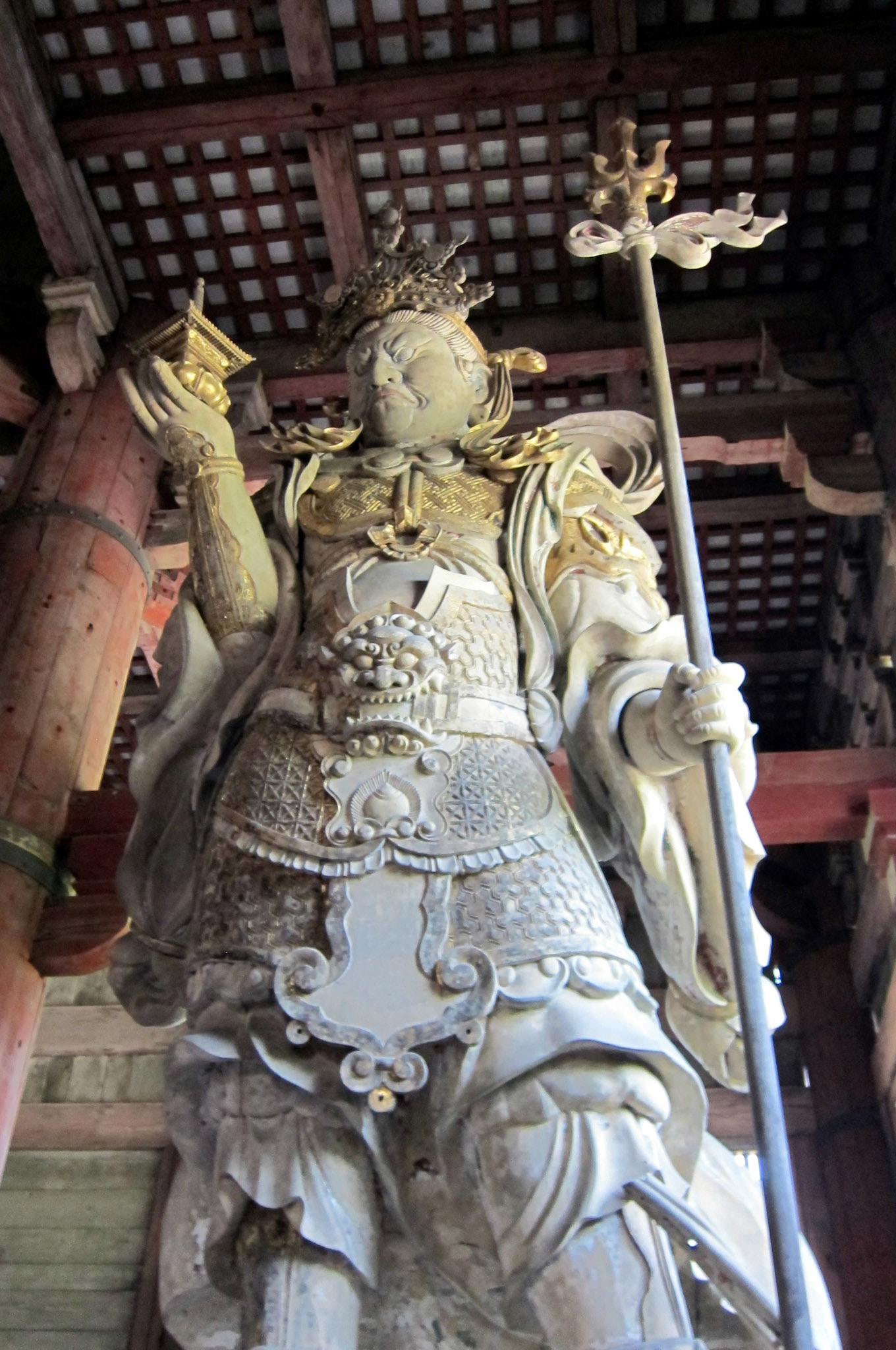
Misshaku, or Misshaku-rikishi, one of the Ni-ō (“Two Kings”) who guard the Tōdai Temple
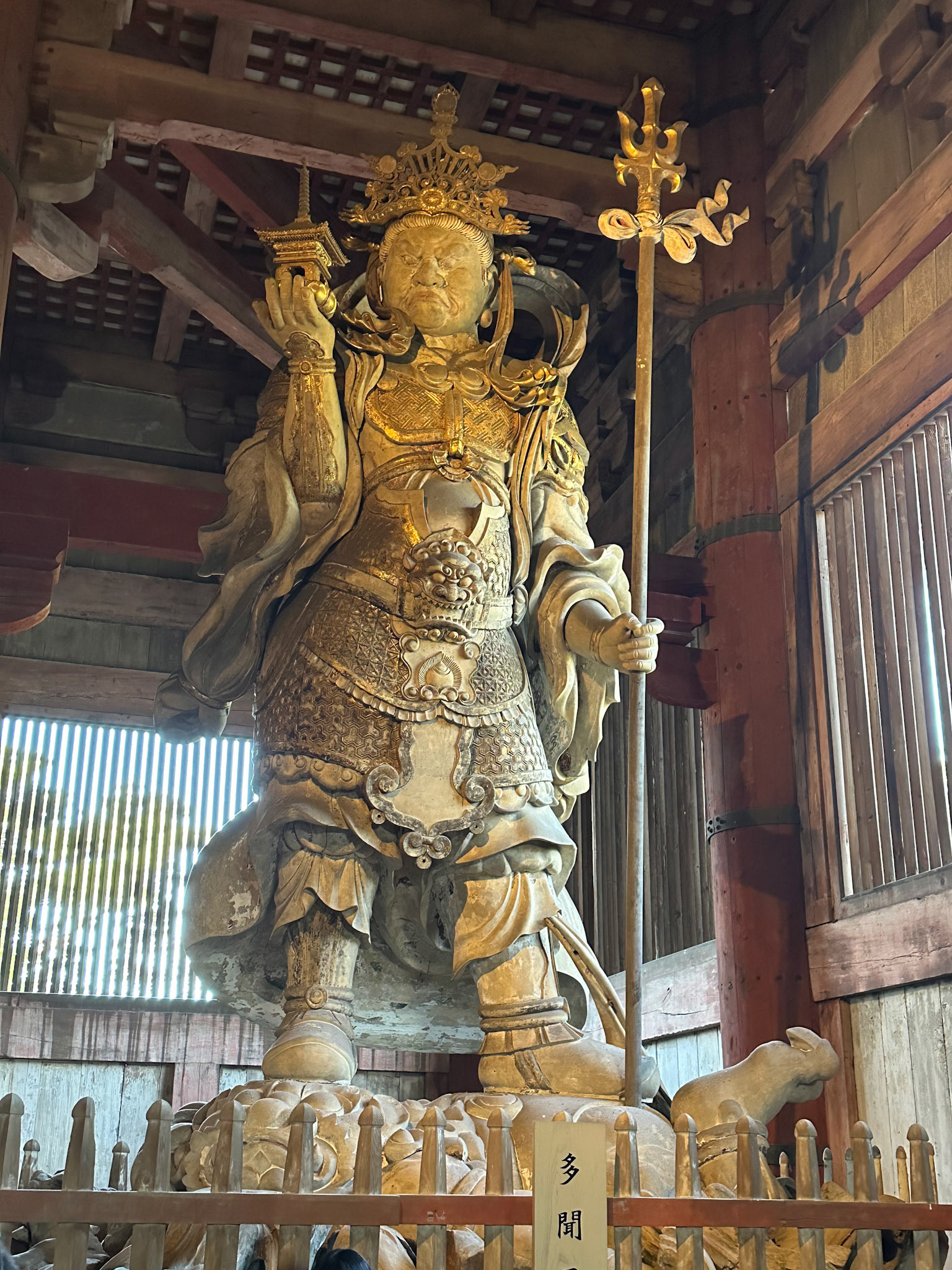
Misshaku, or Misshaku-rikishi, one of the Ni-ō (“Two Kings”) who guard the Tōdai Temple
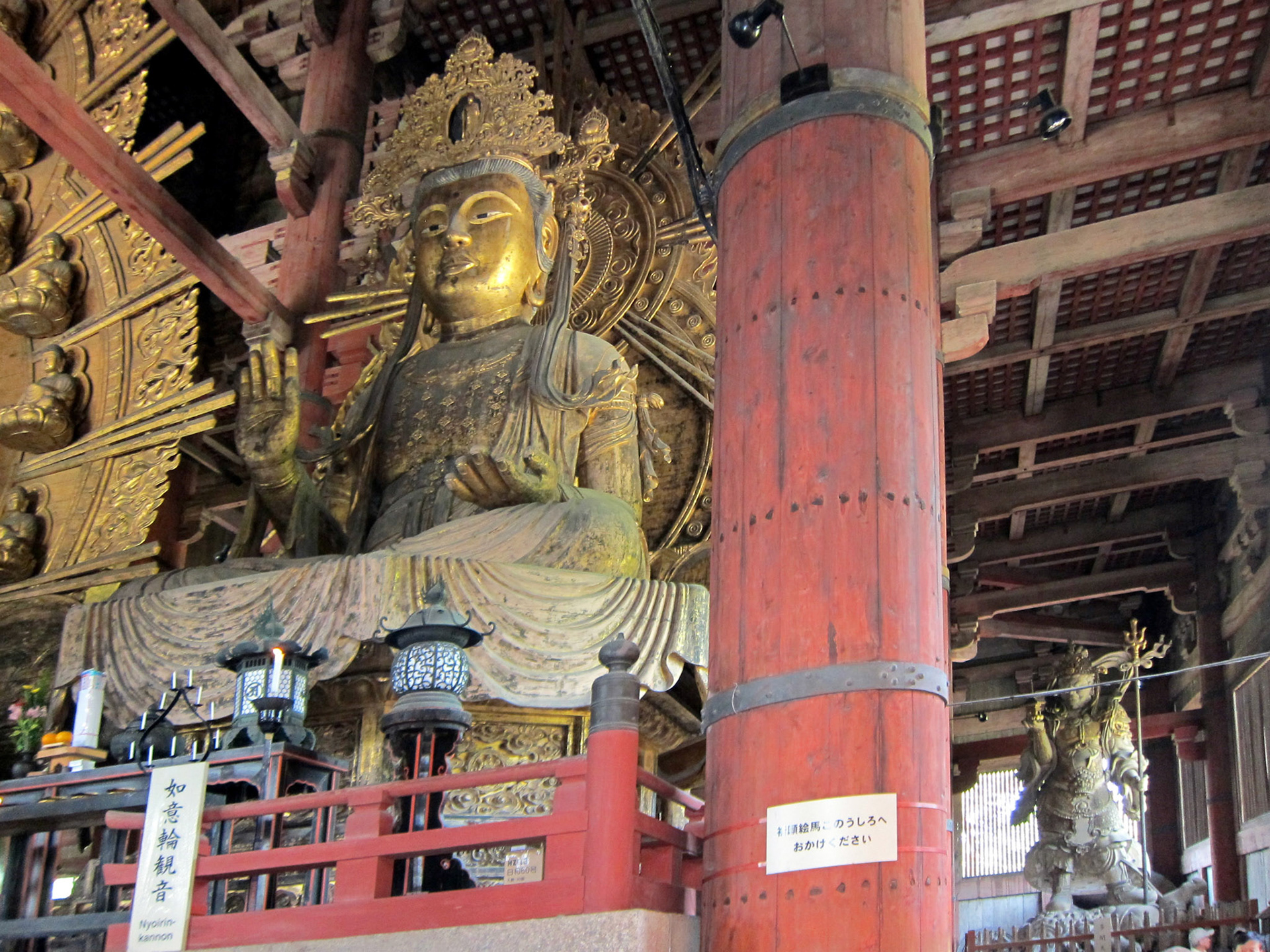
A Bodhisattva, a servant of the main Buddha. There is one of these statues on either side of the Daibutsu.

A Bodhisattva, a servant of the main Buddha. There is one of these statues on either side of the Daibutsu.
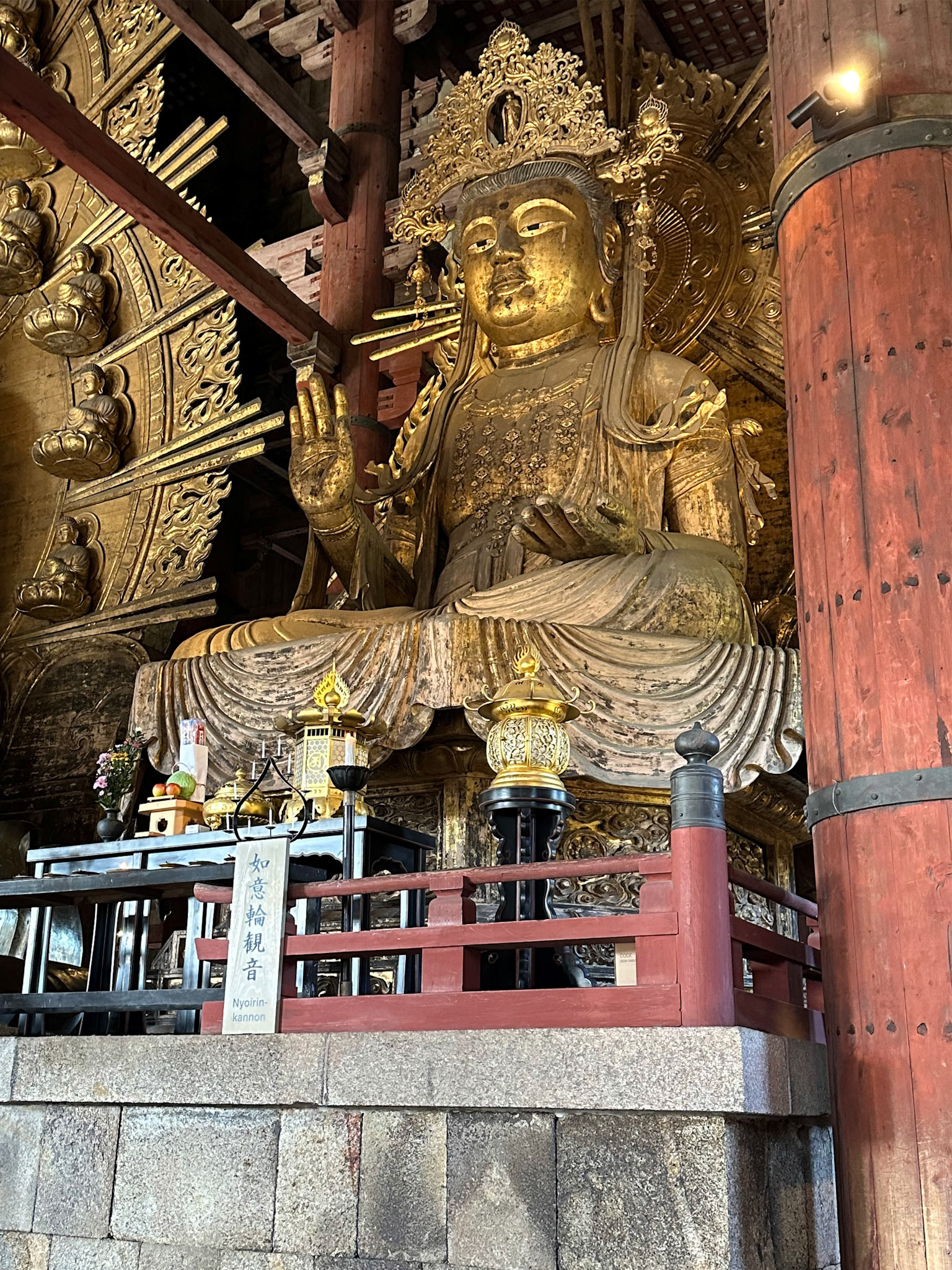
A Bodhisattva, a servant of the main Buddha. There is one of these statues on either side of the Daibutsu.
Dotonbori Food District
It has been said that the people of Osaka spend more on food than on anything else, and the term "kuidaore" ("eat until you drop") is used to describe the food culture here.
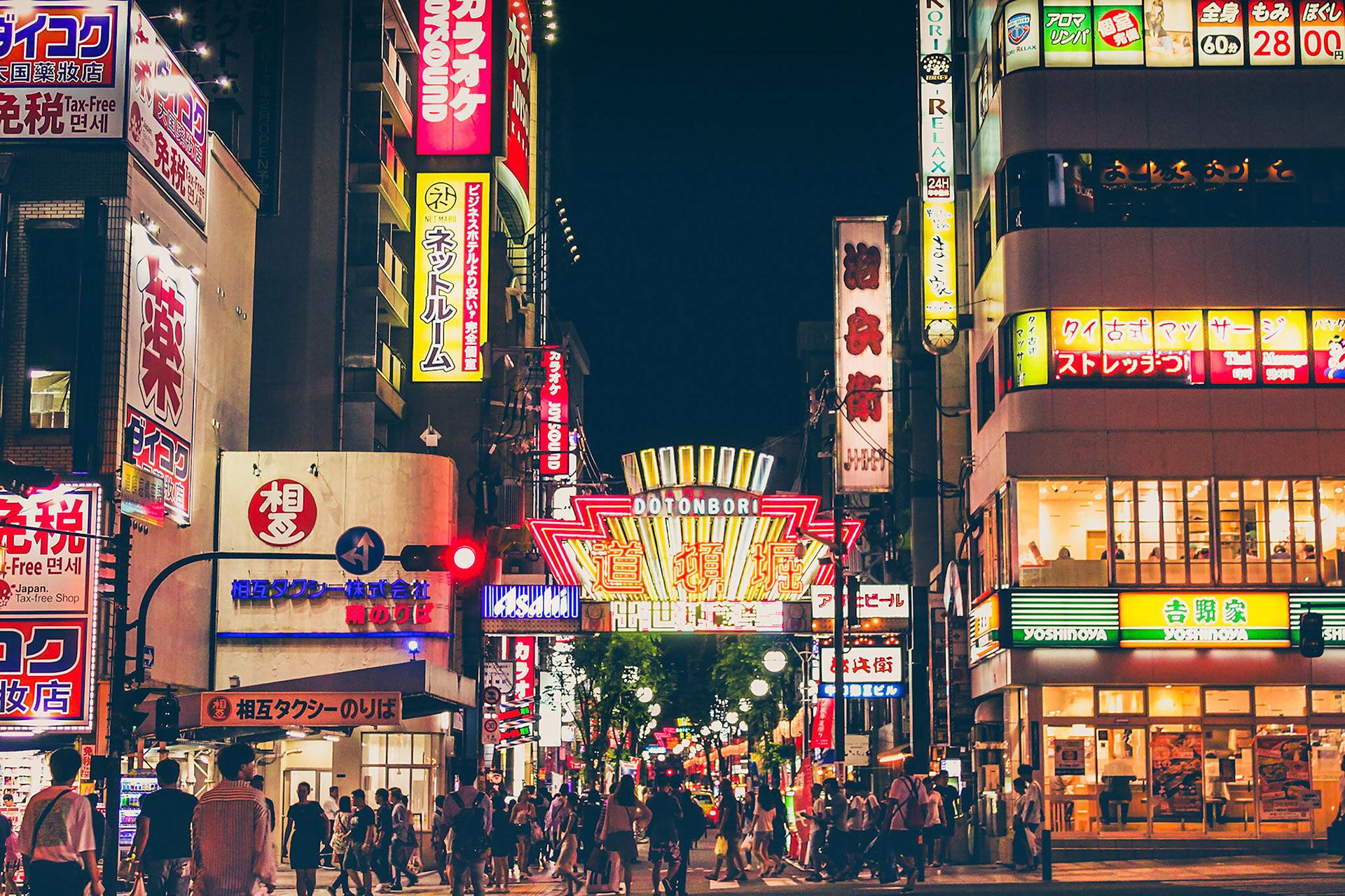
Dotonbori food district scene

Giant mascot in the Dotonbori food district.

Box lunch in the Dotonbori food district.

Strange foods in the Dotonbori food district.
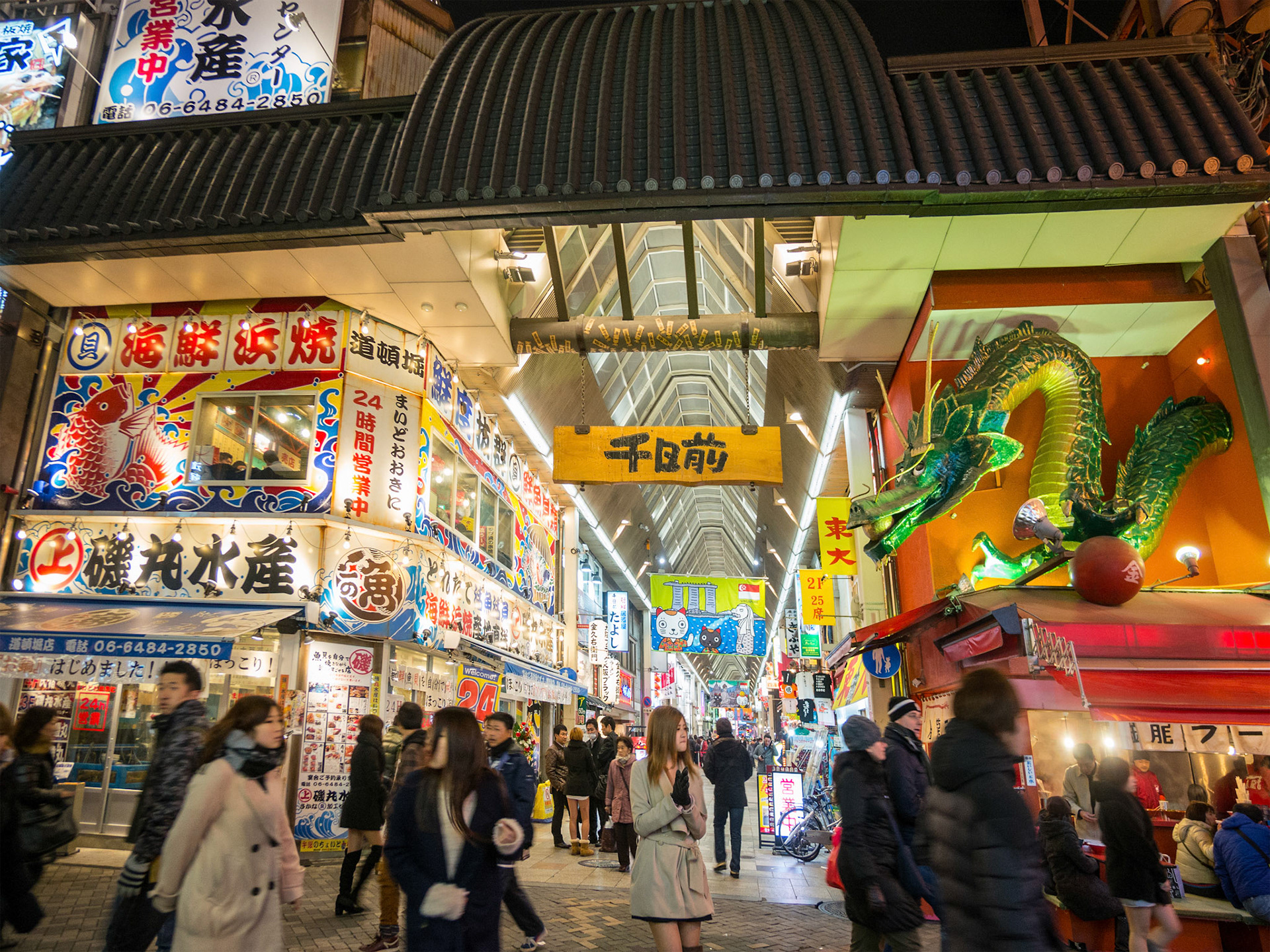
Dotonbori food district scene
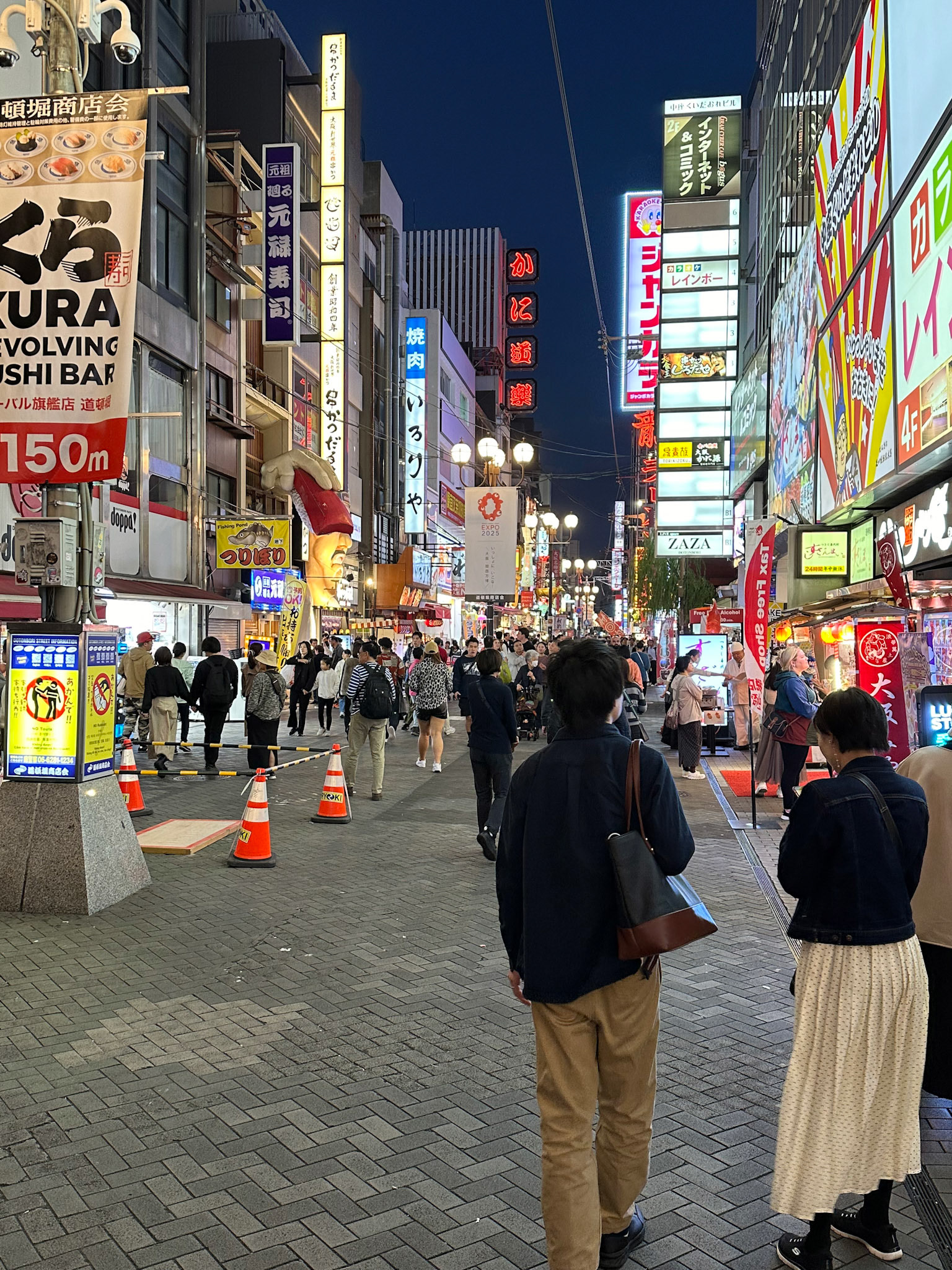
Dotonbori food district scene
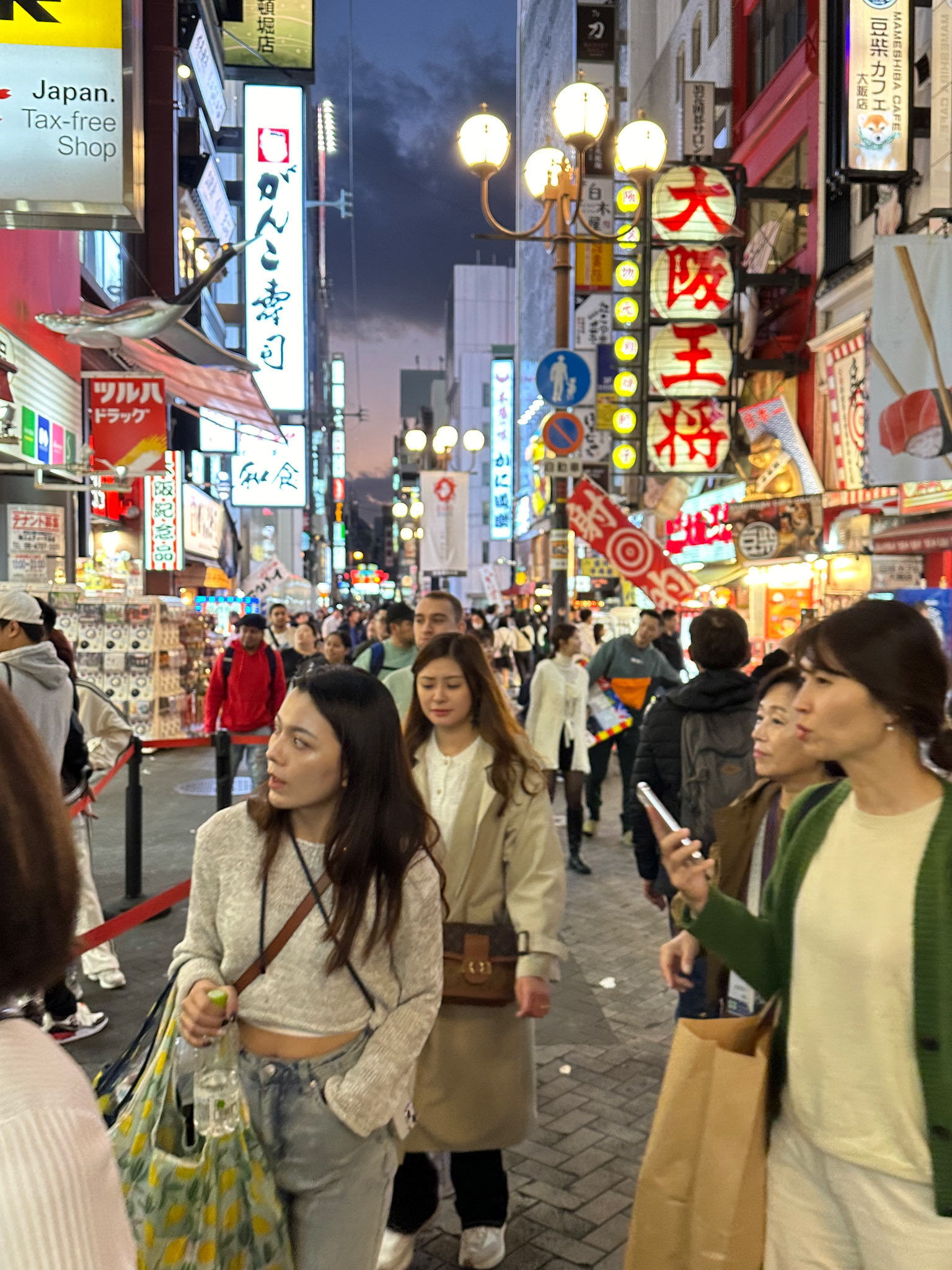
Dotonbori food district scene
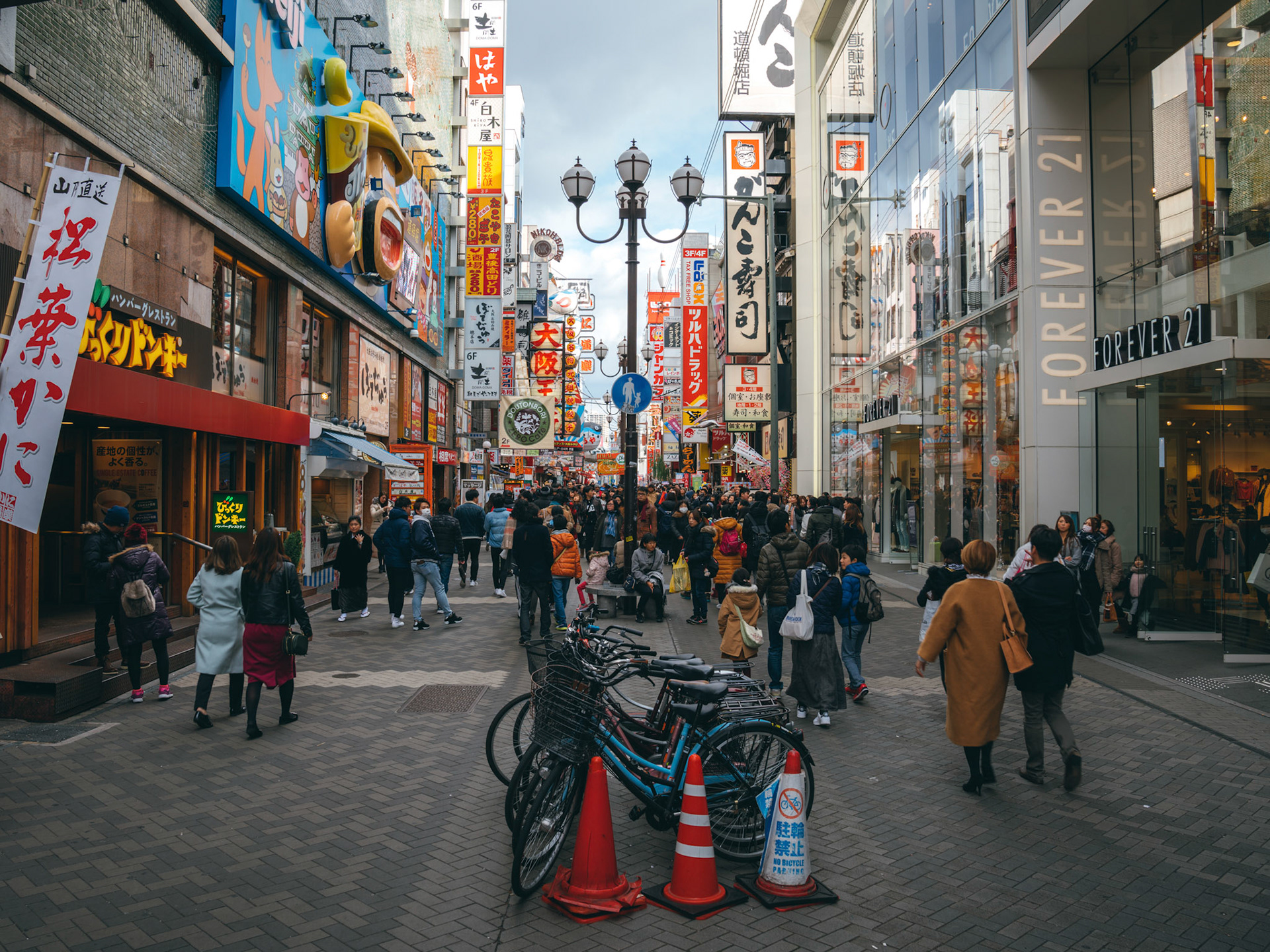
Dotonbori food district scene
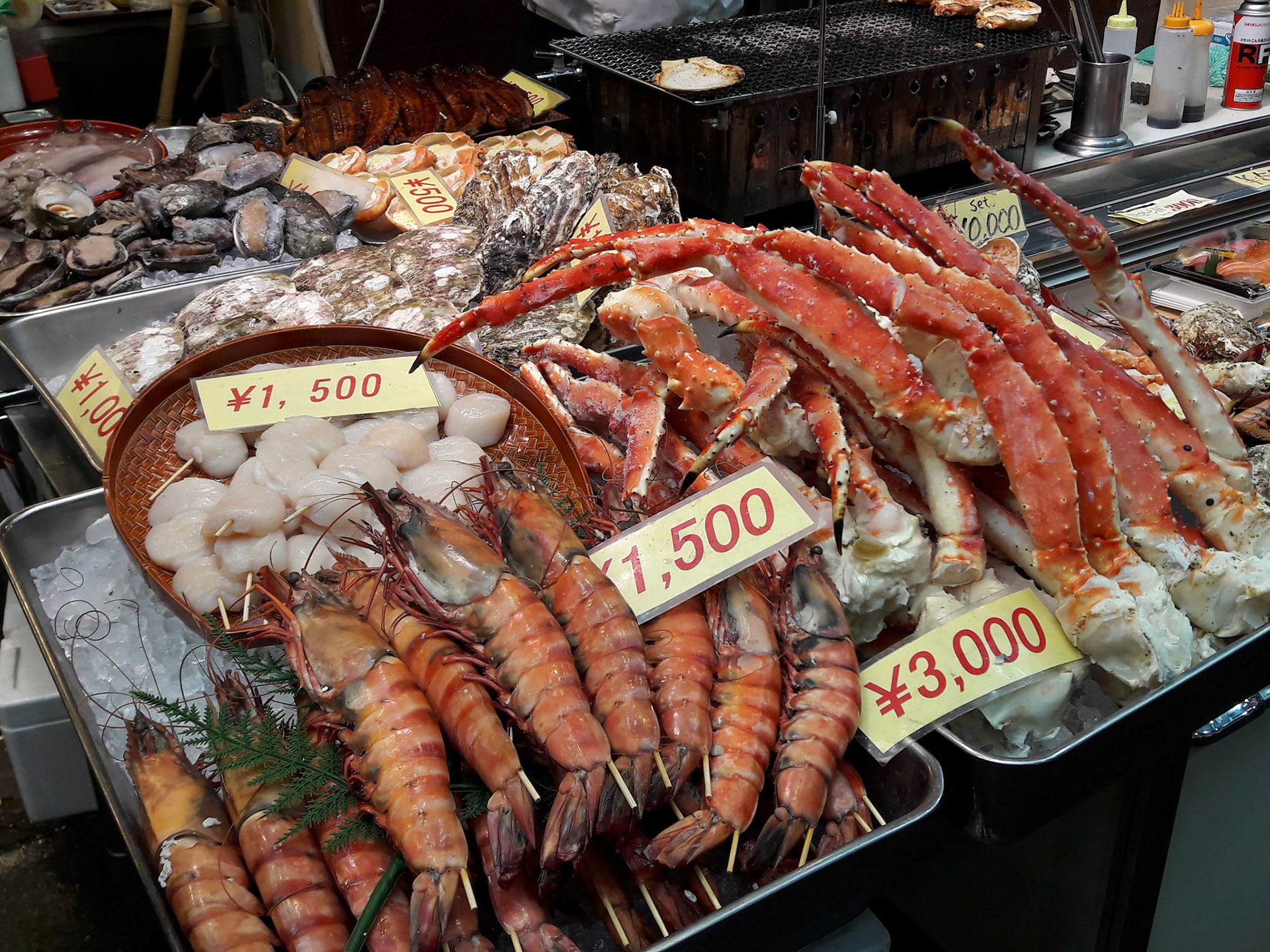
Dotonbori food district scene
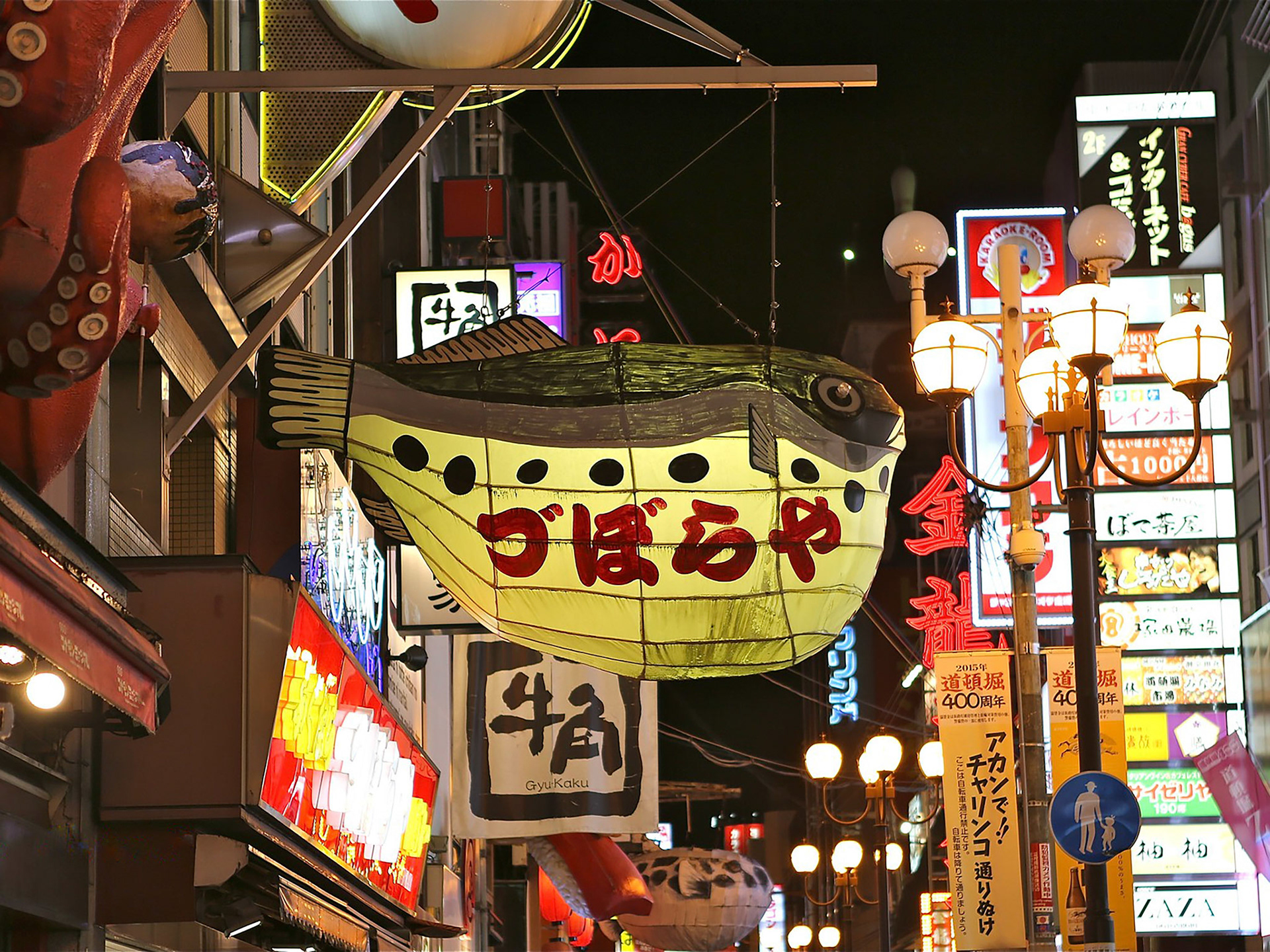

Dotonbori food district scene

Dotonbori food district scene

Dotonbori food district scene

Dotonbori food district scene
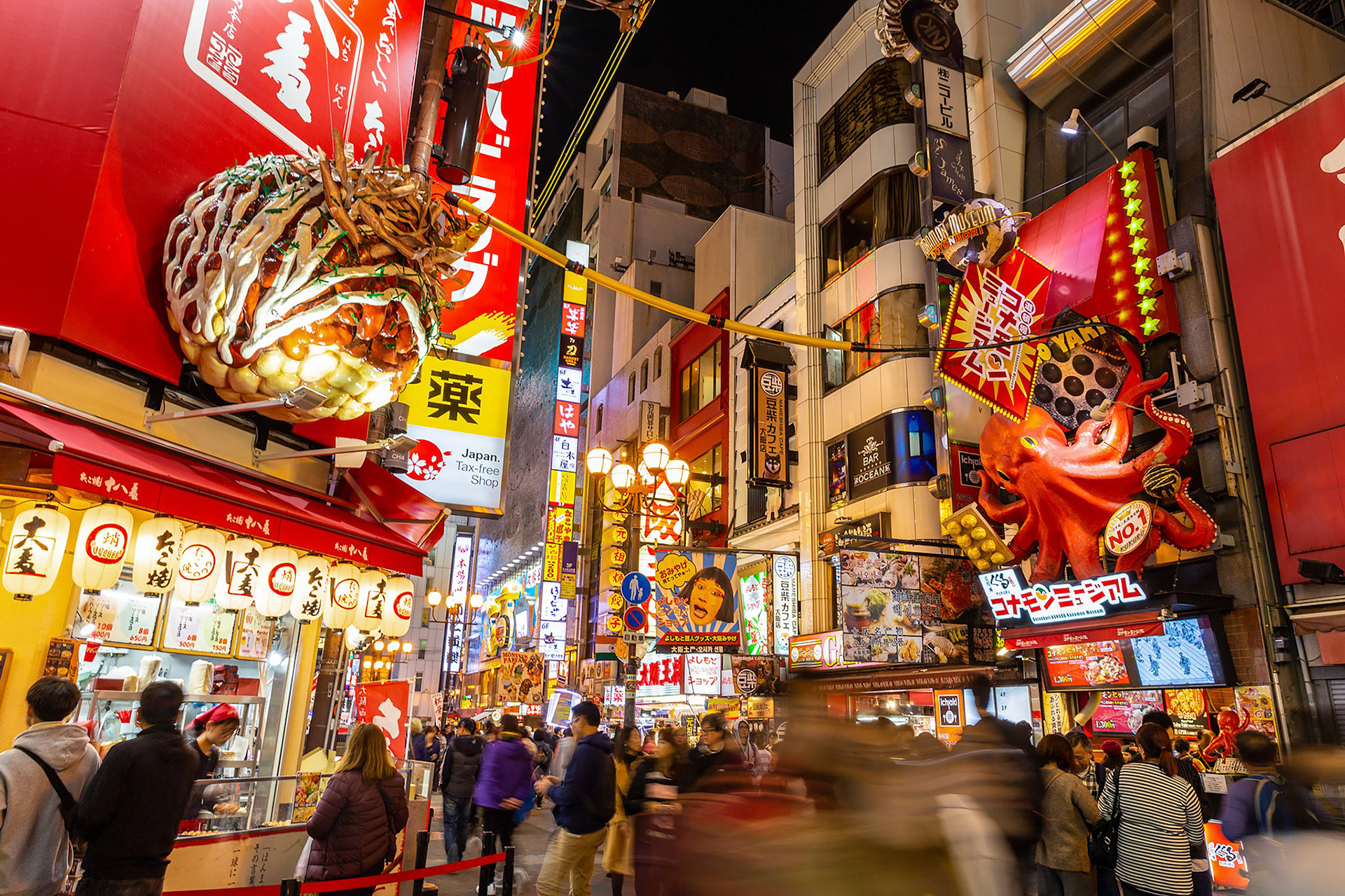
Dotonbori food district scene

Dotonbori food district scene

Giant mascot in the Dotonbori food district.


